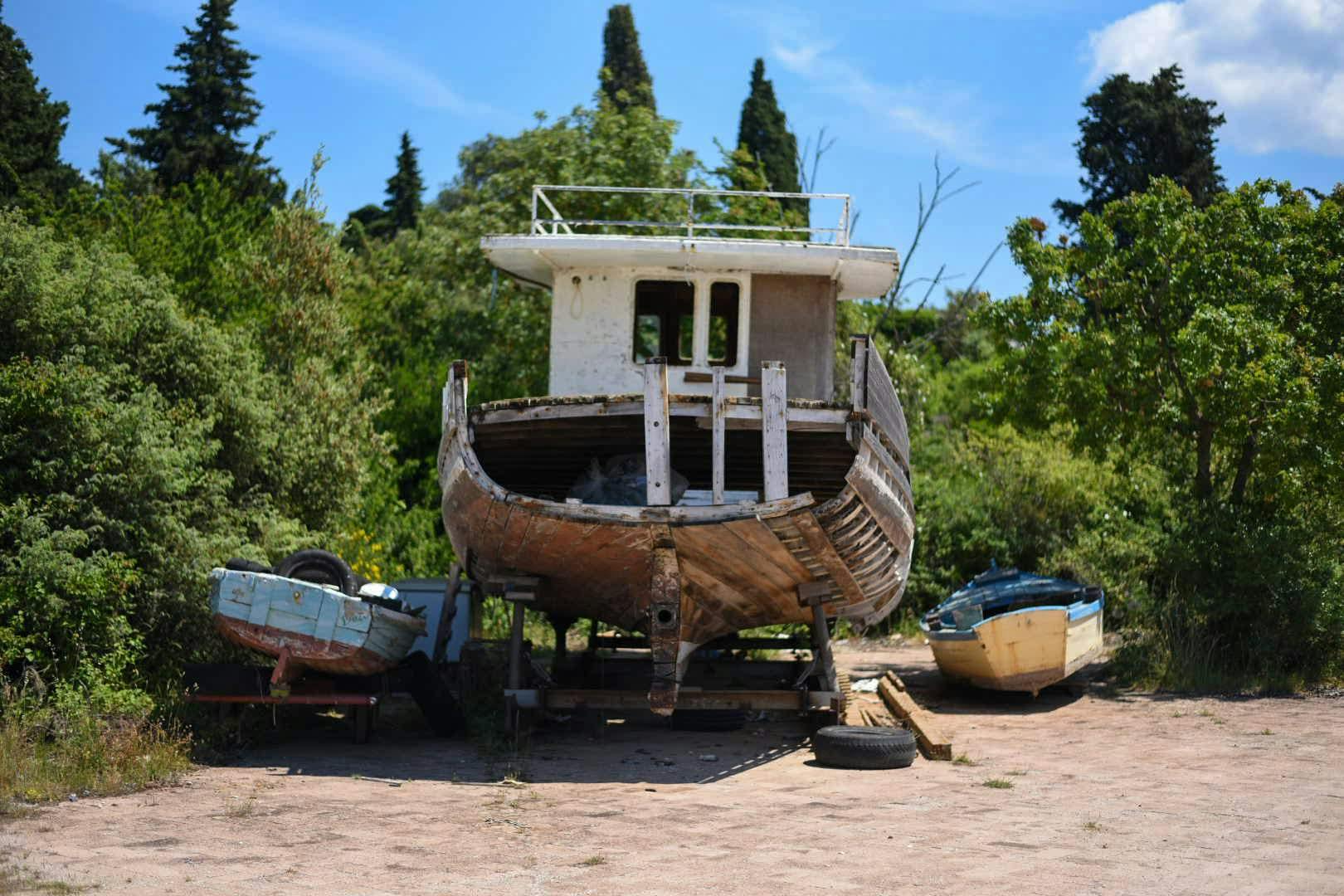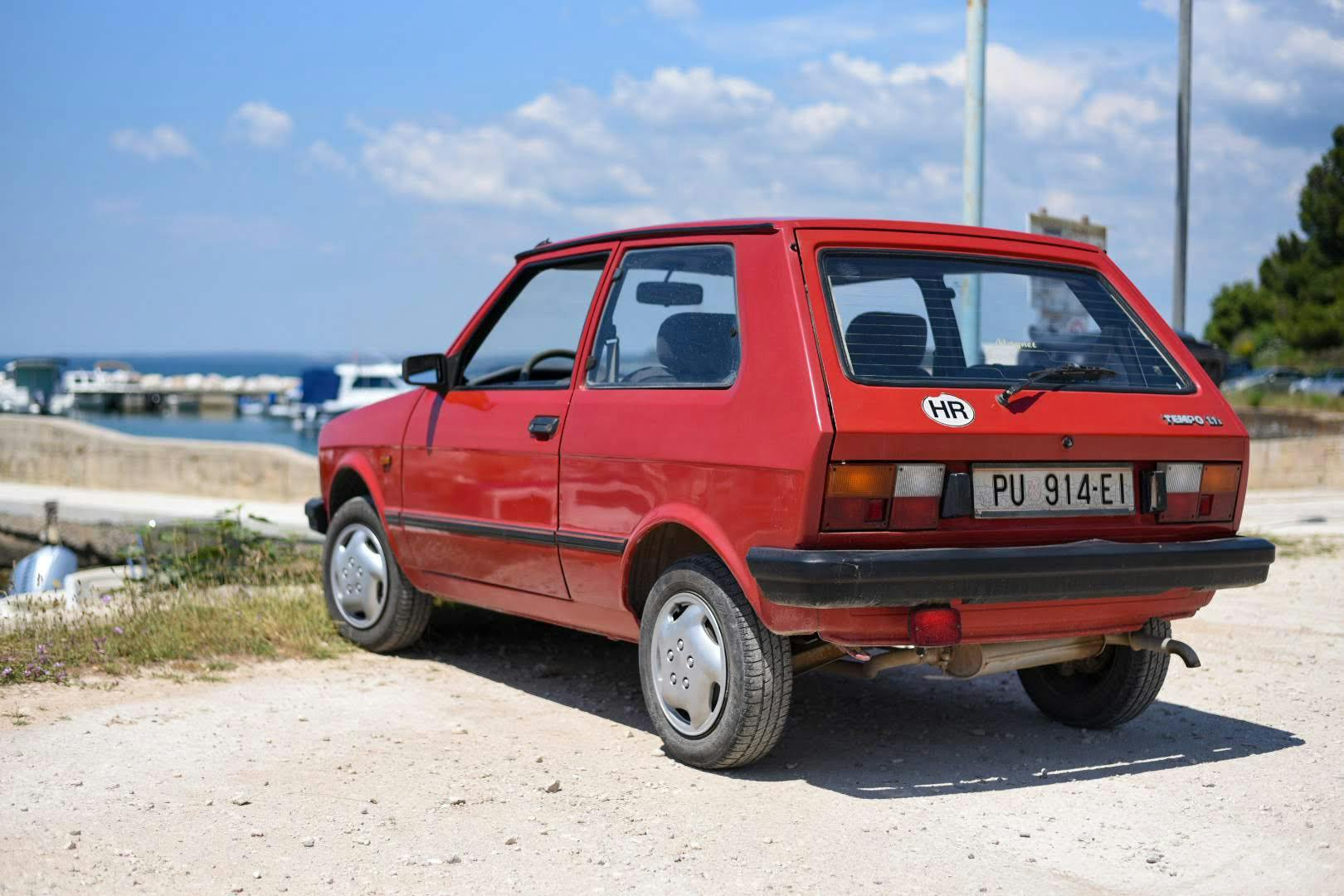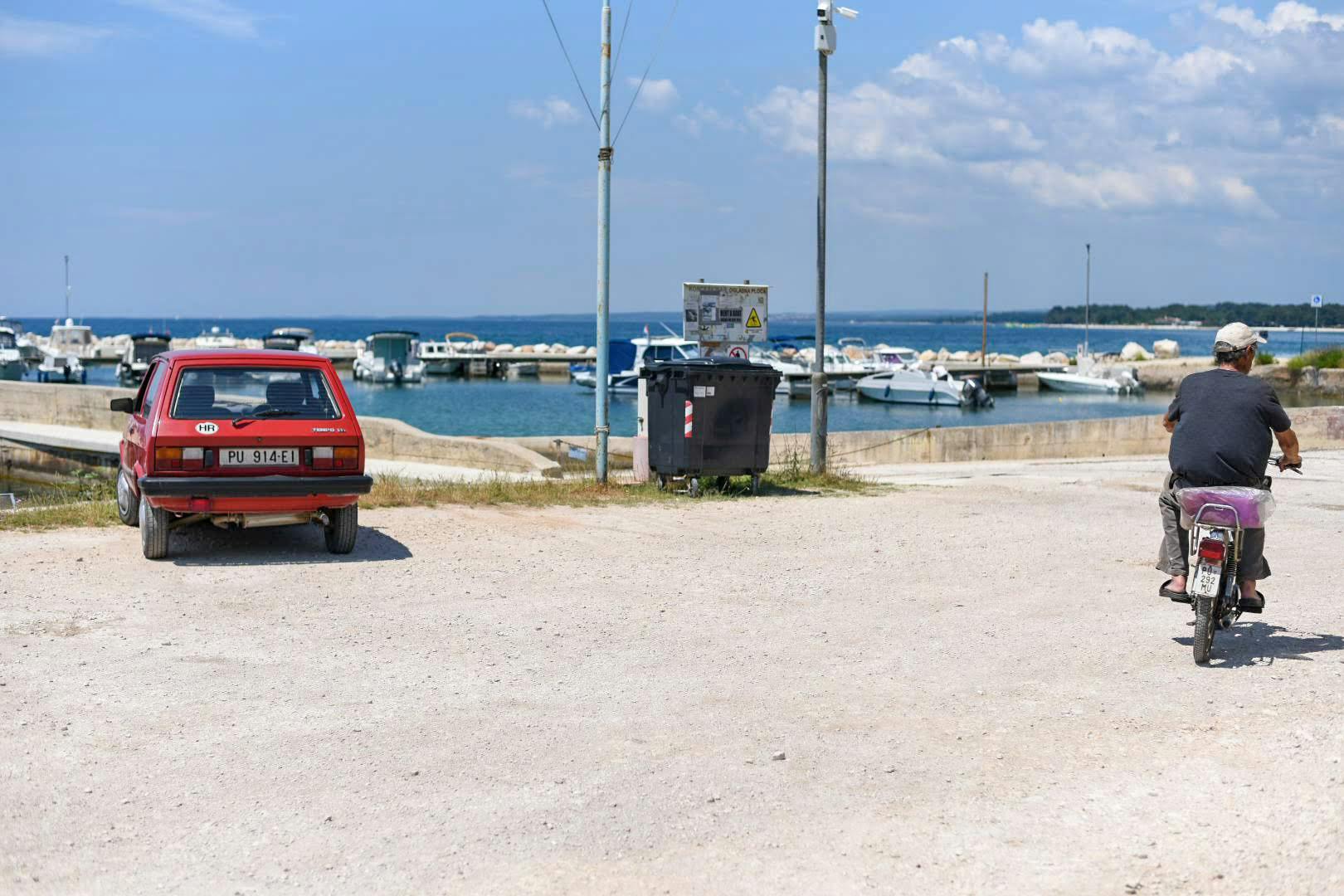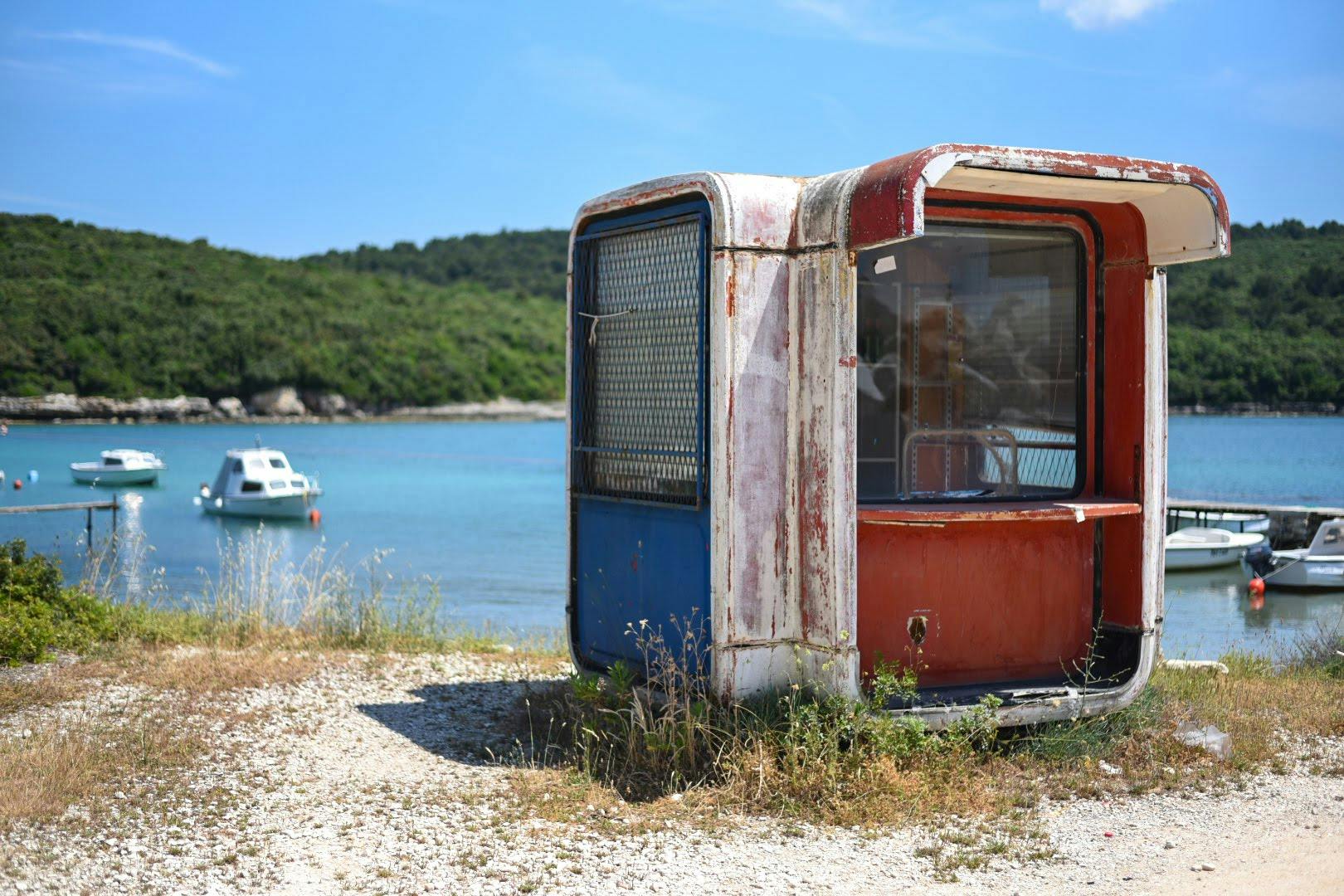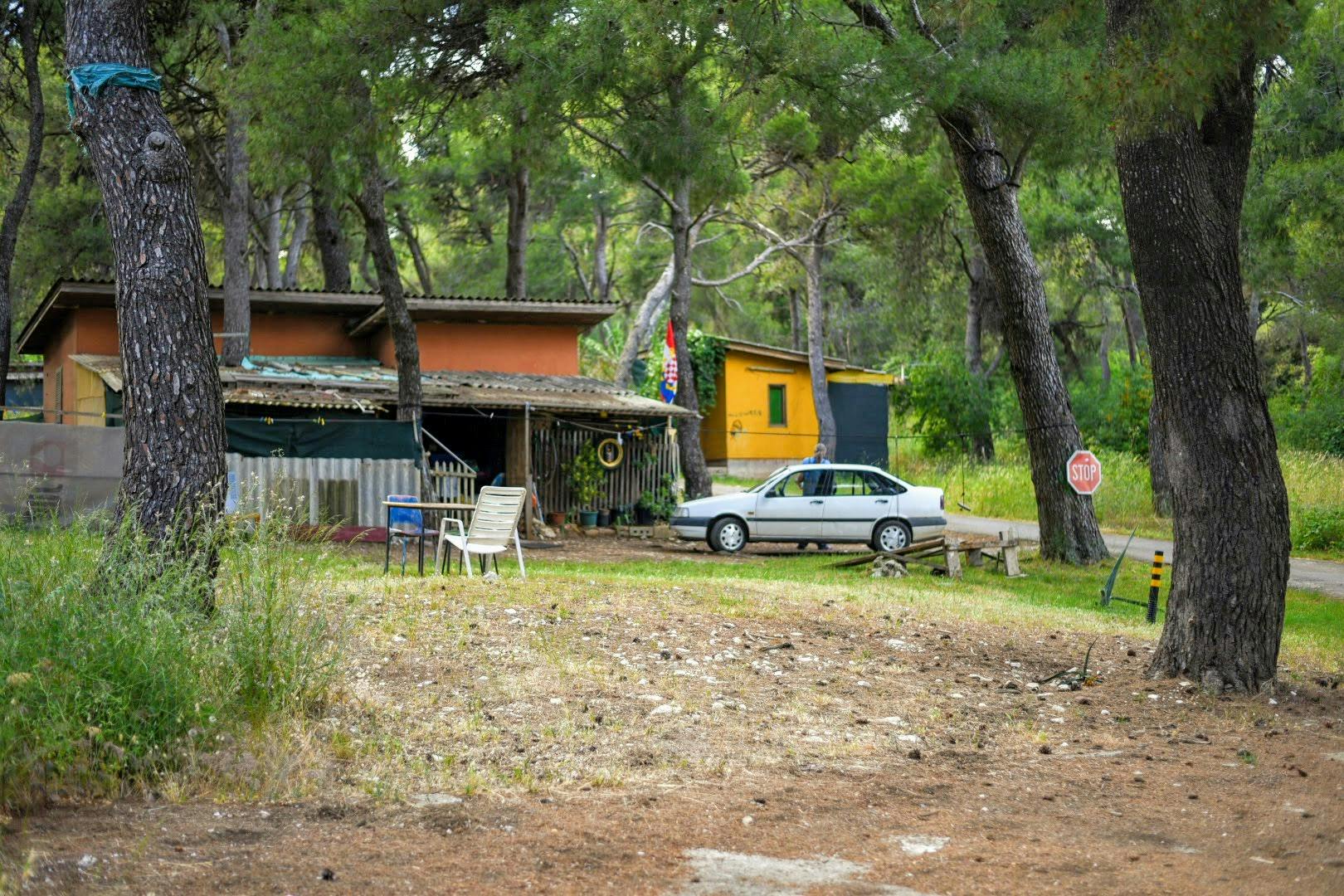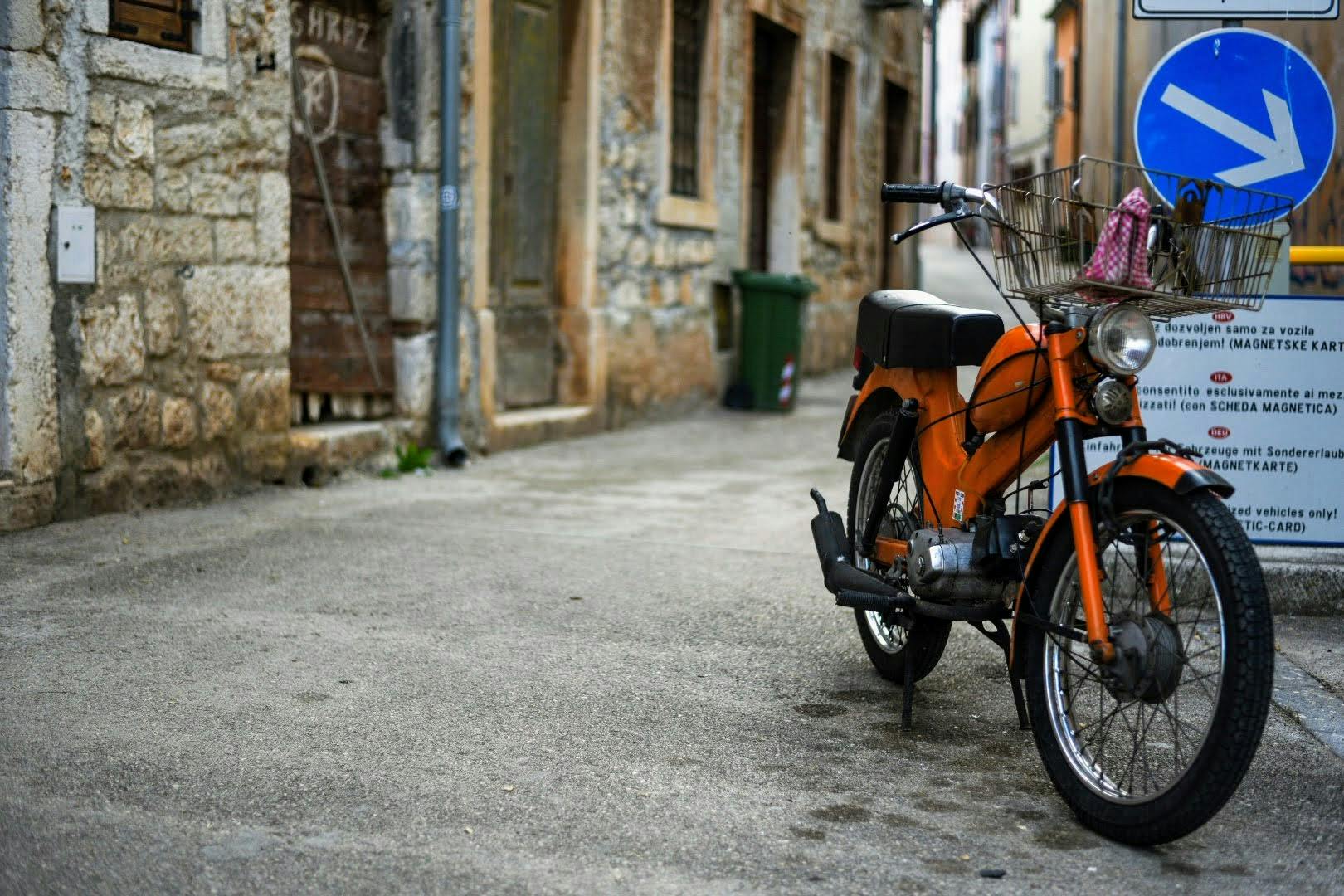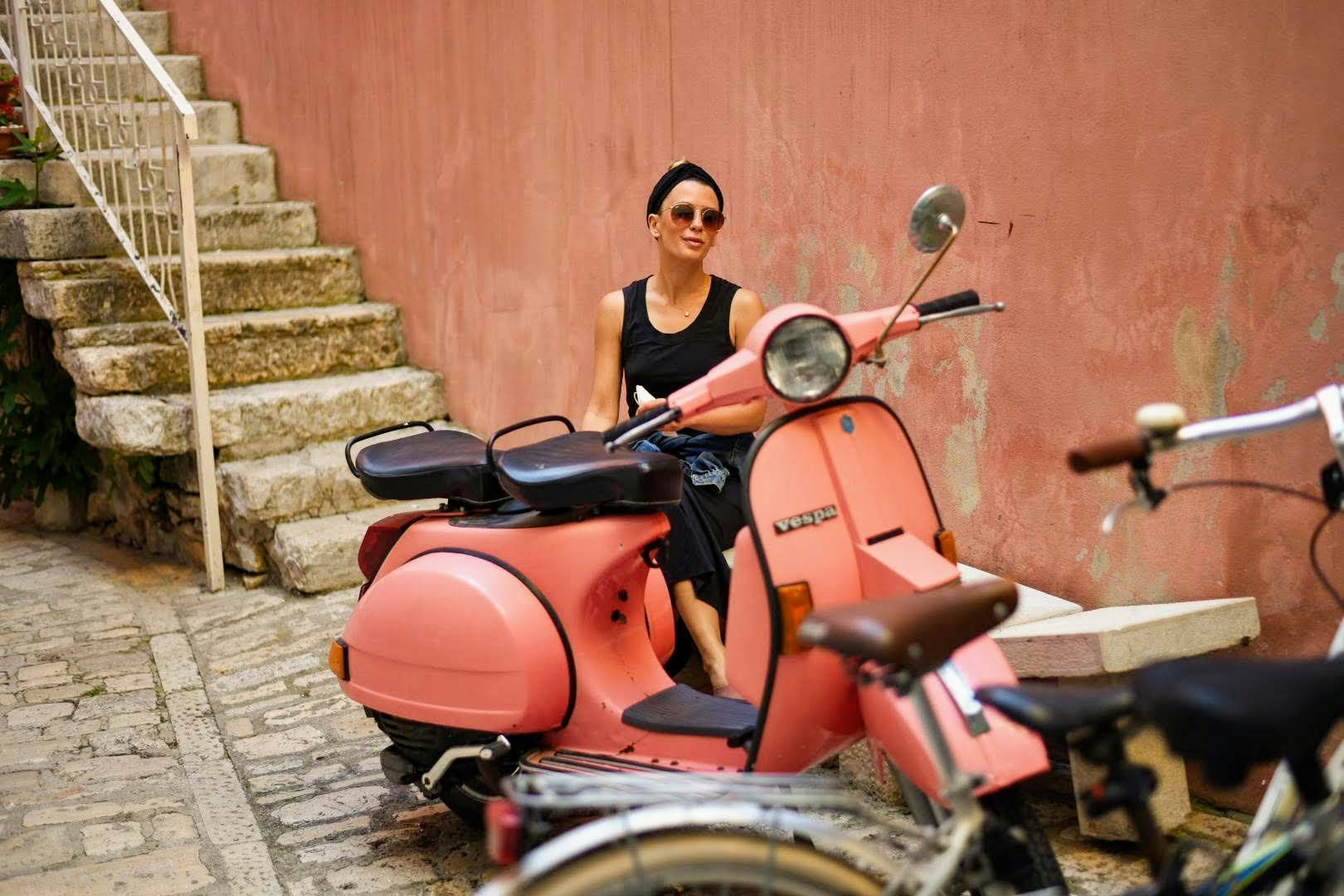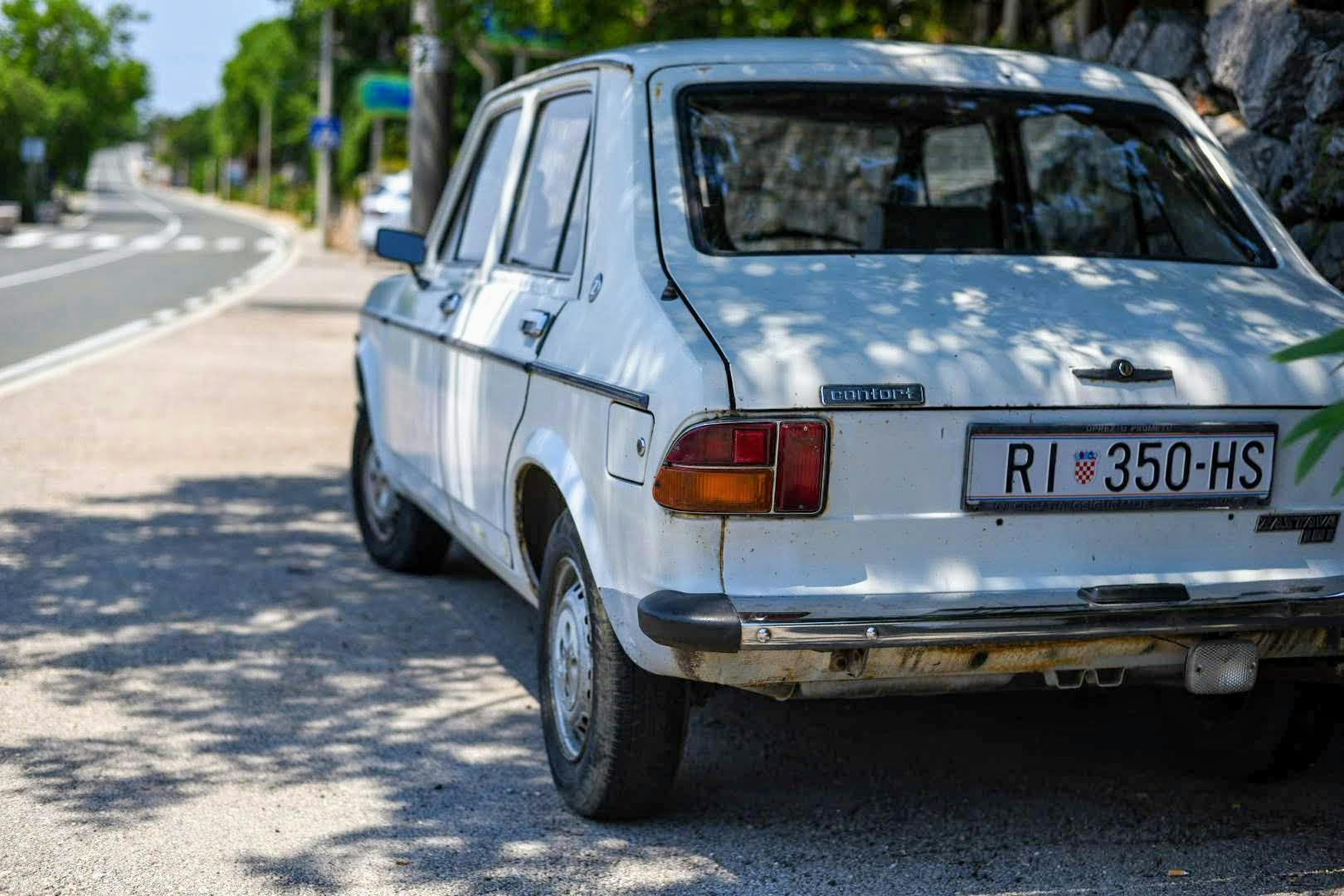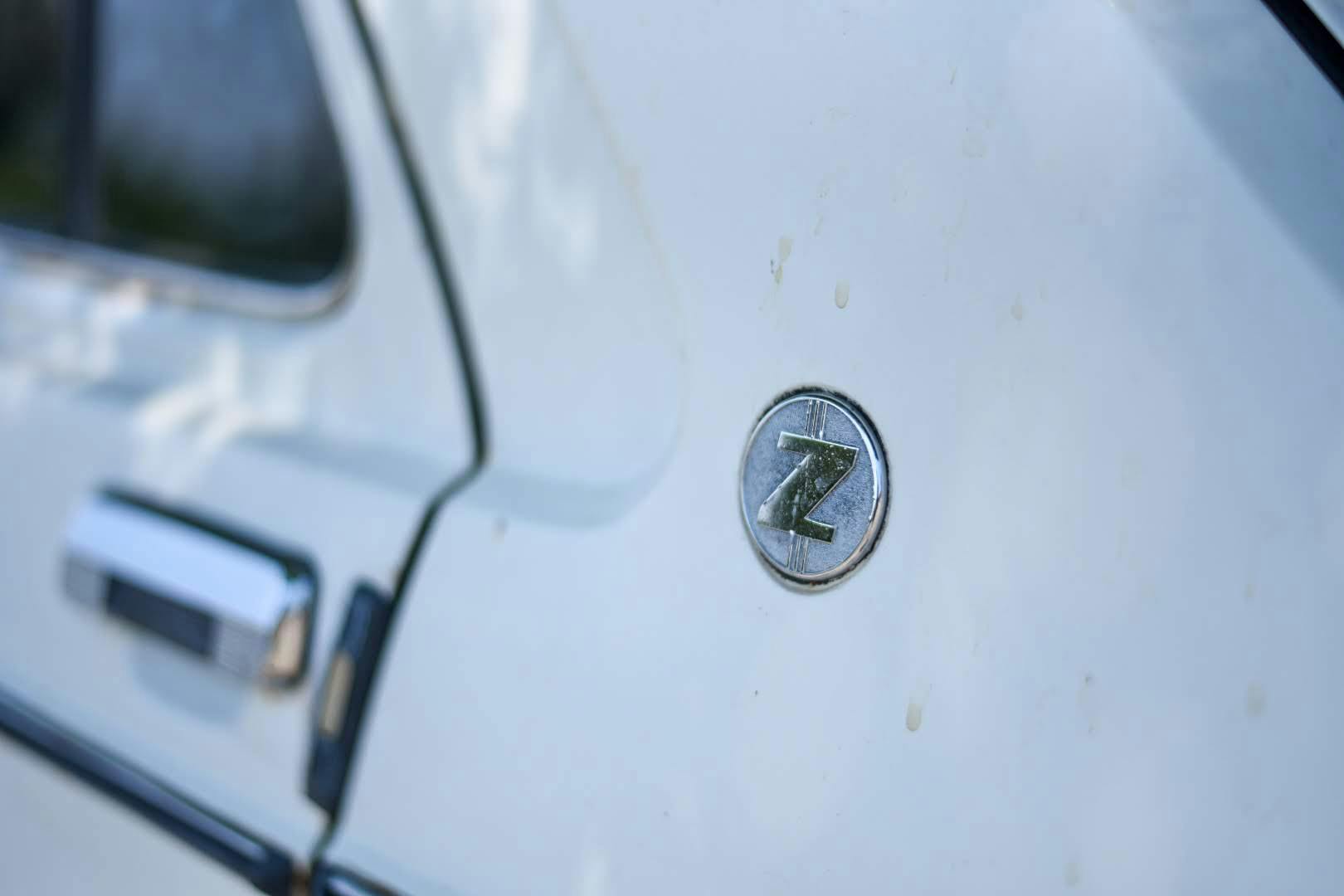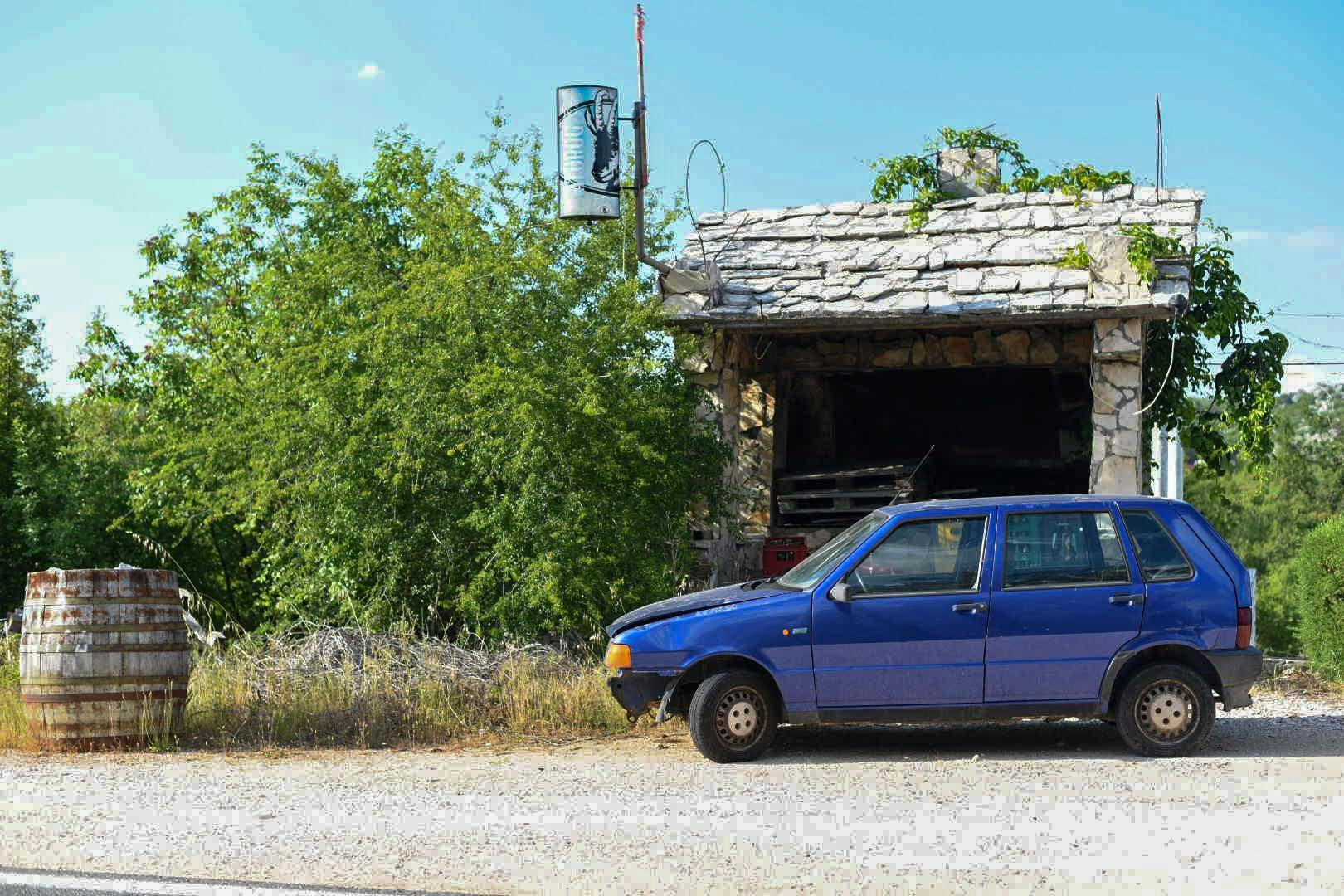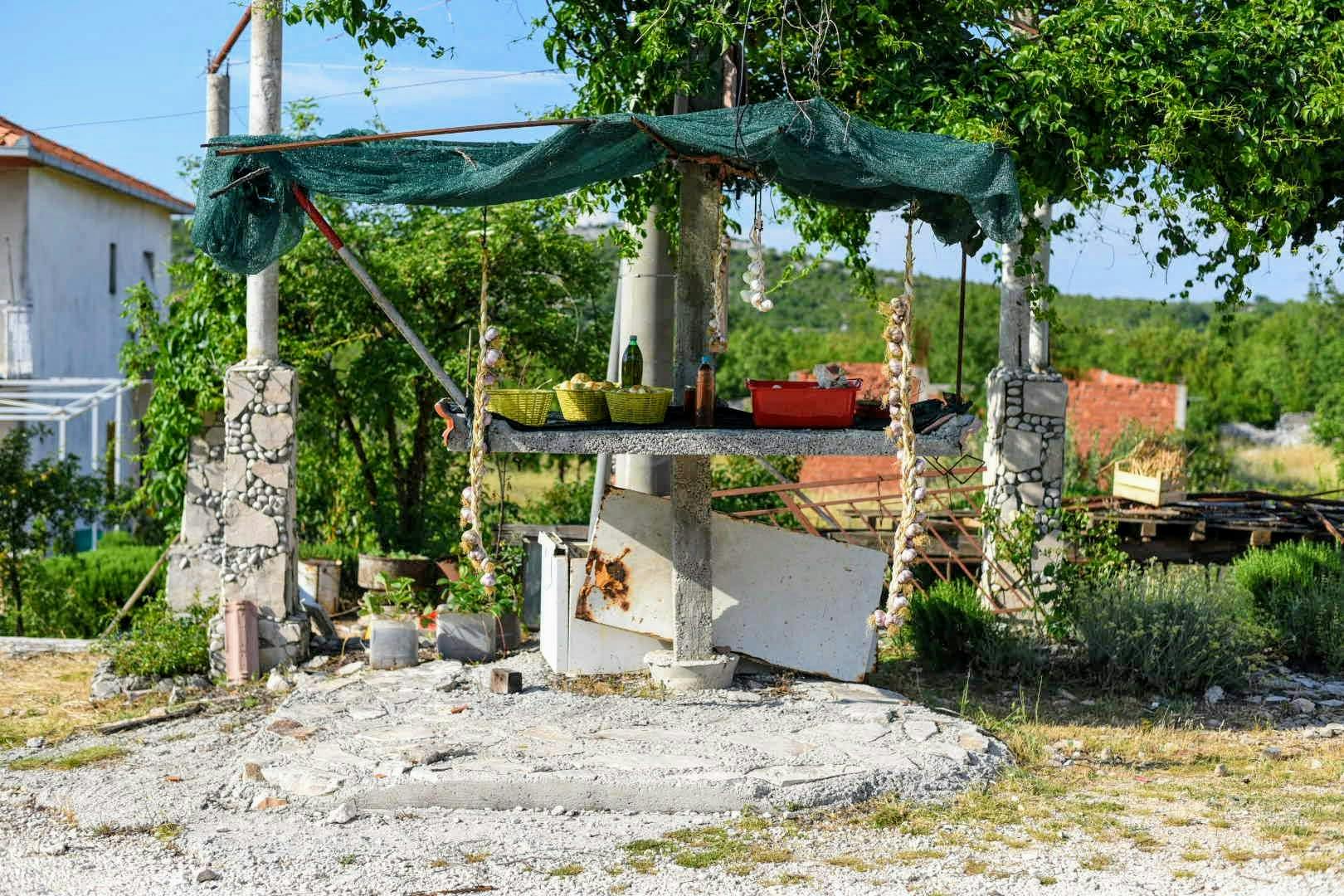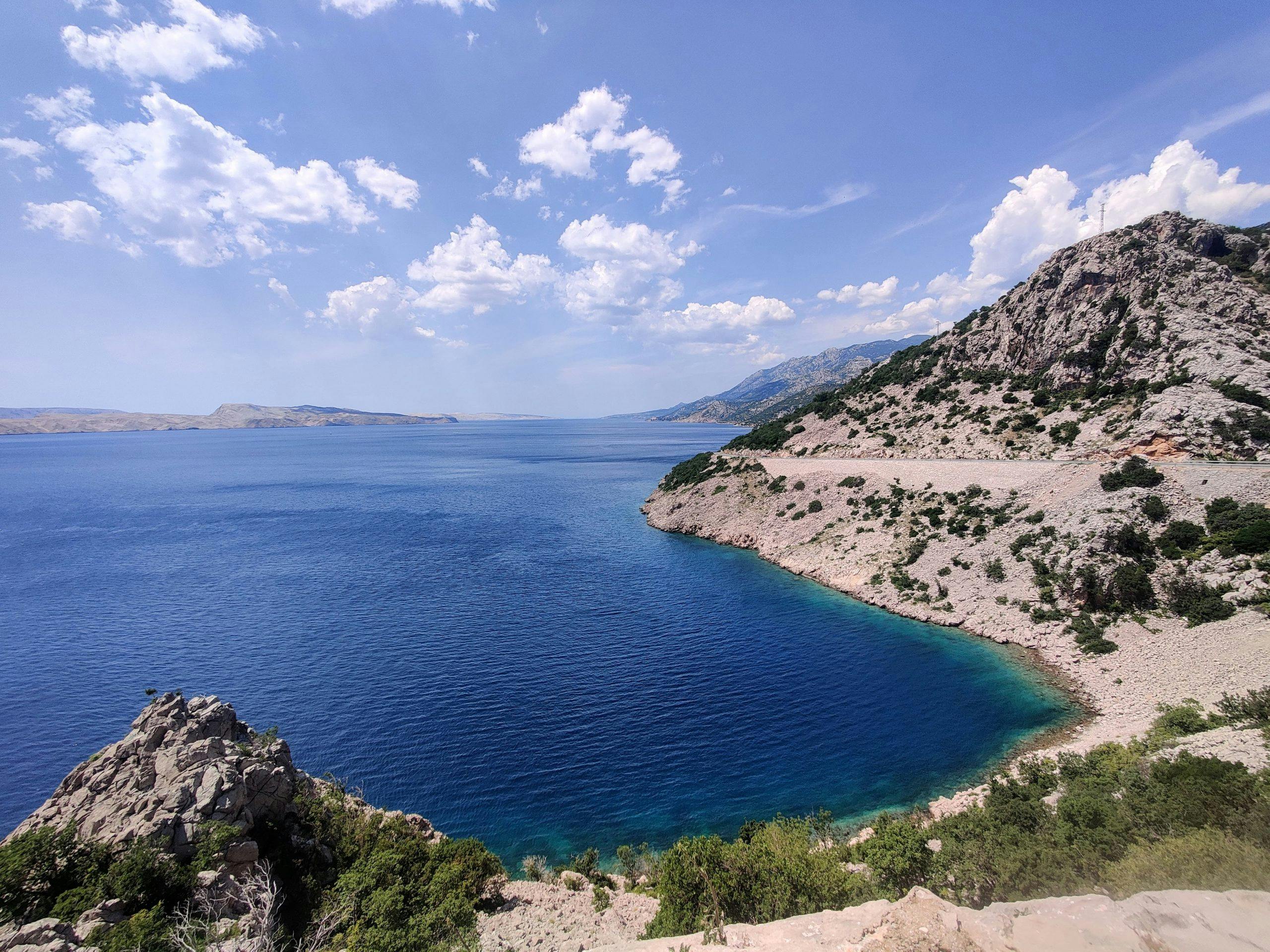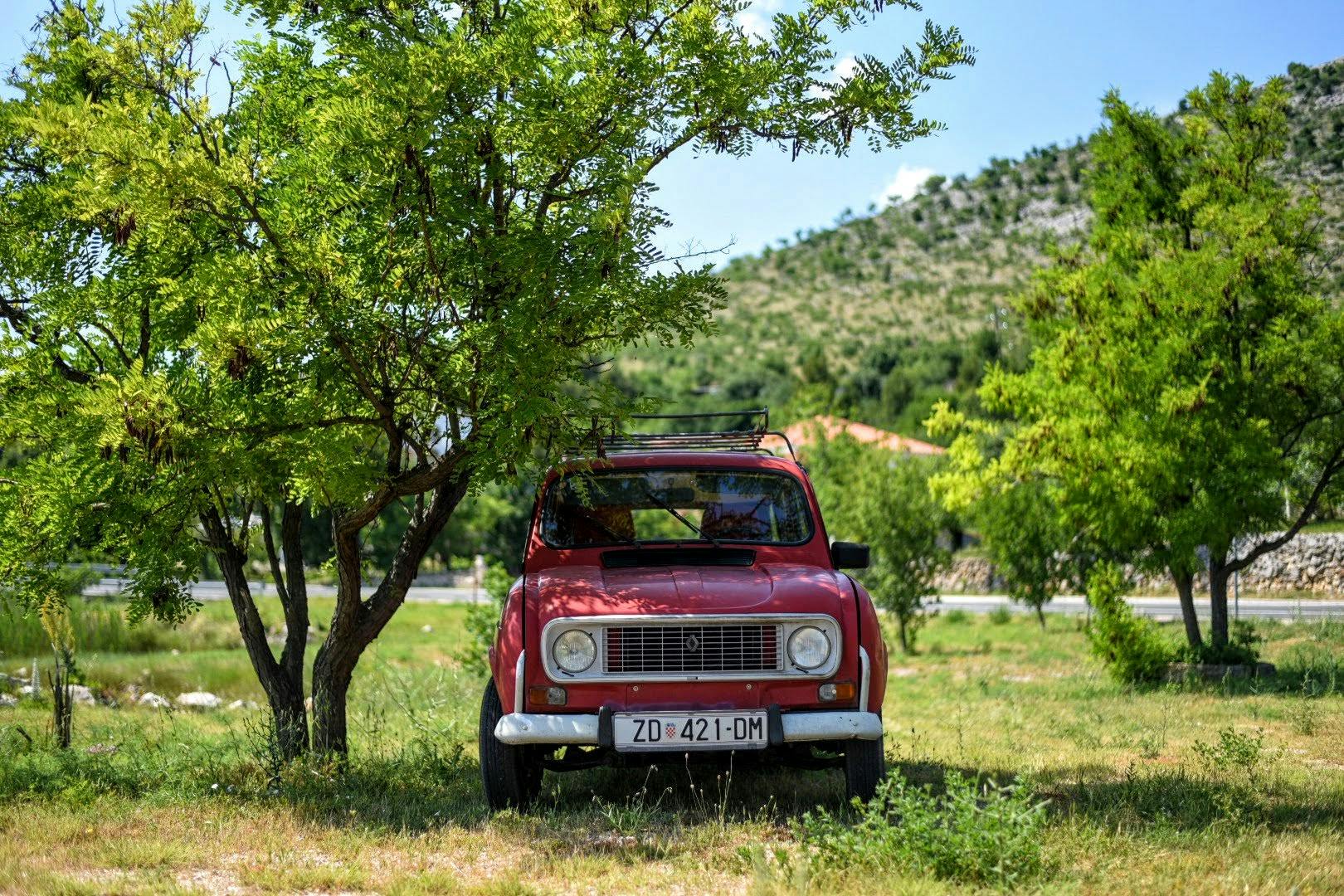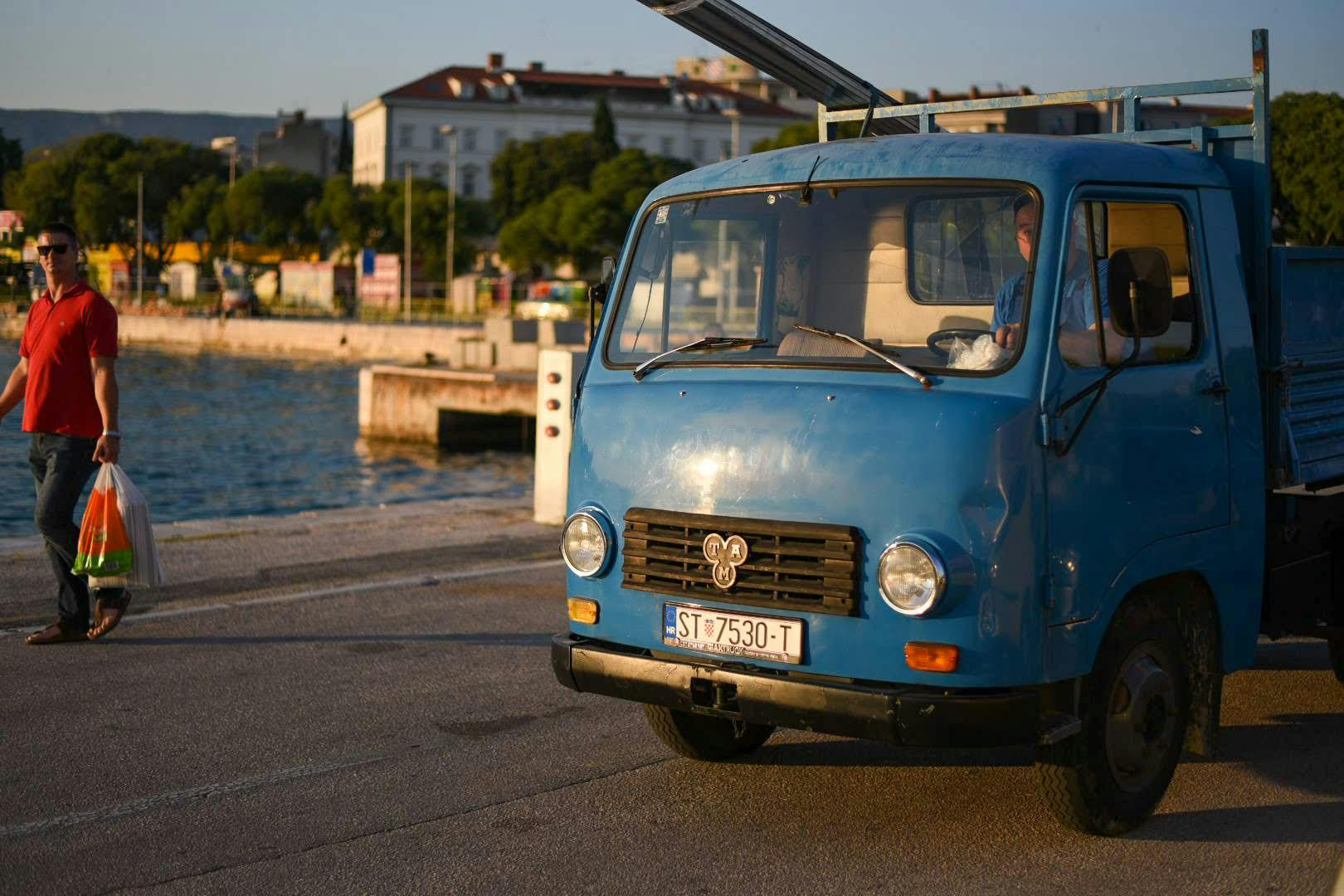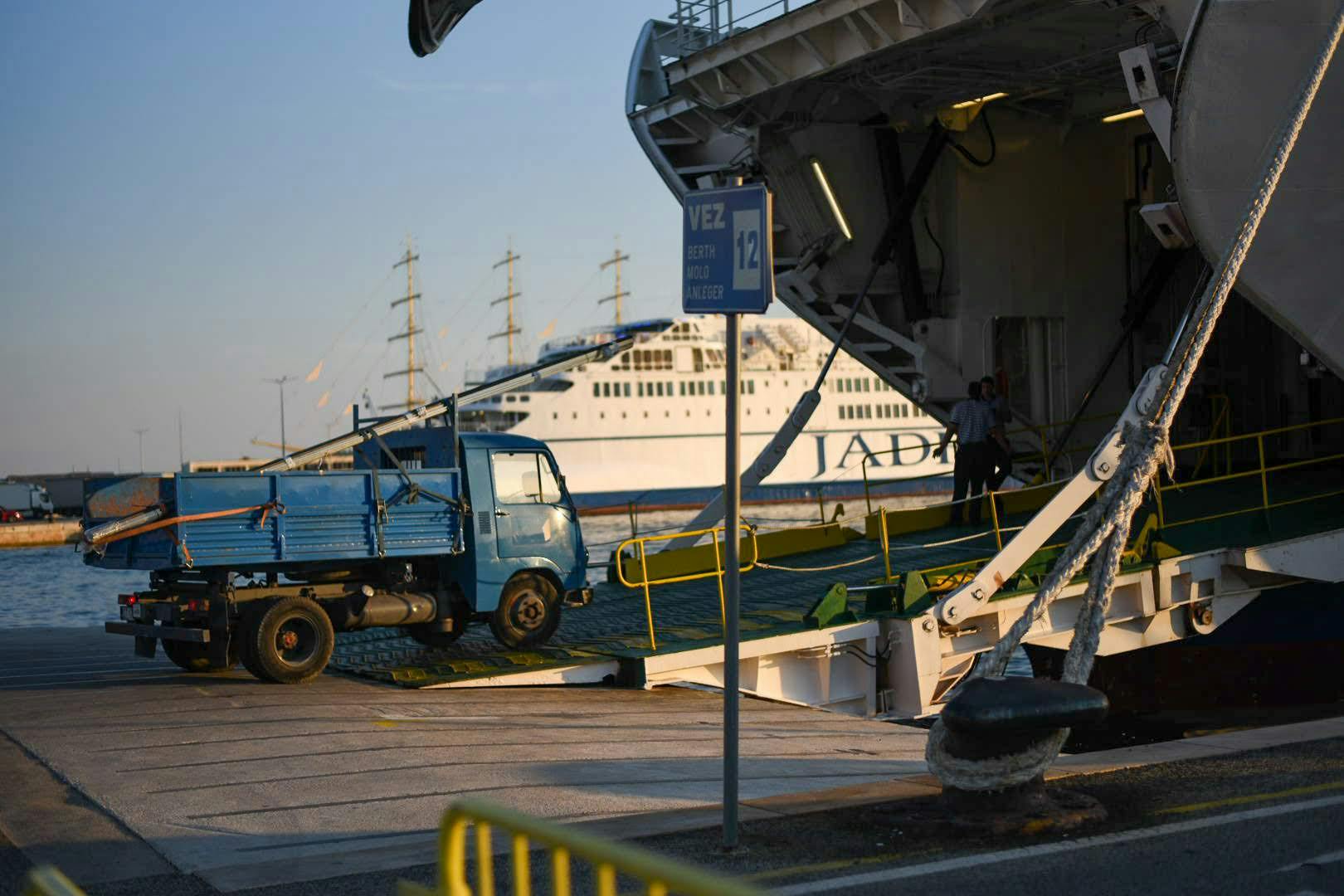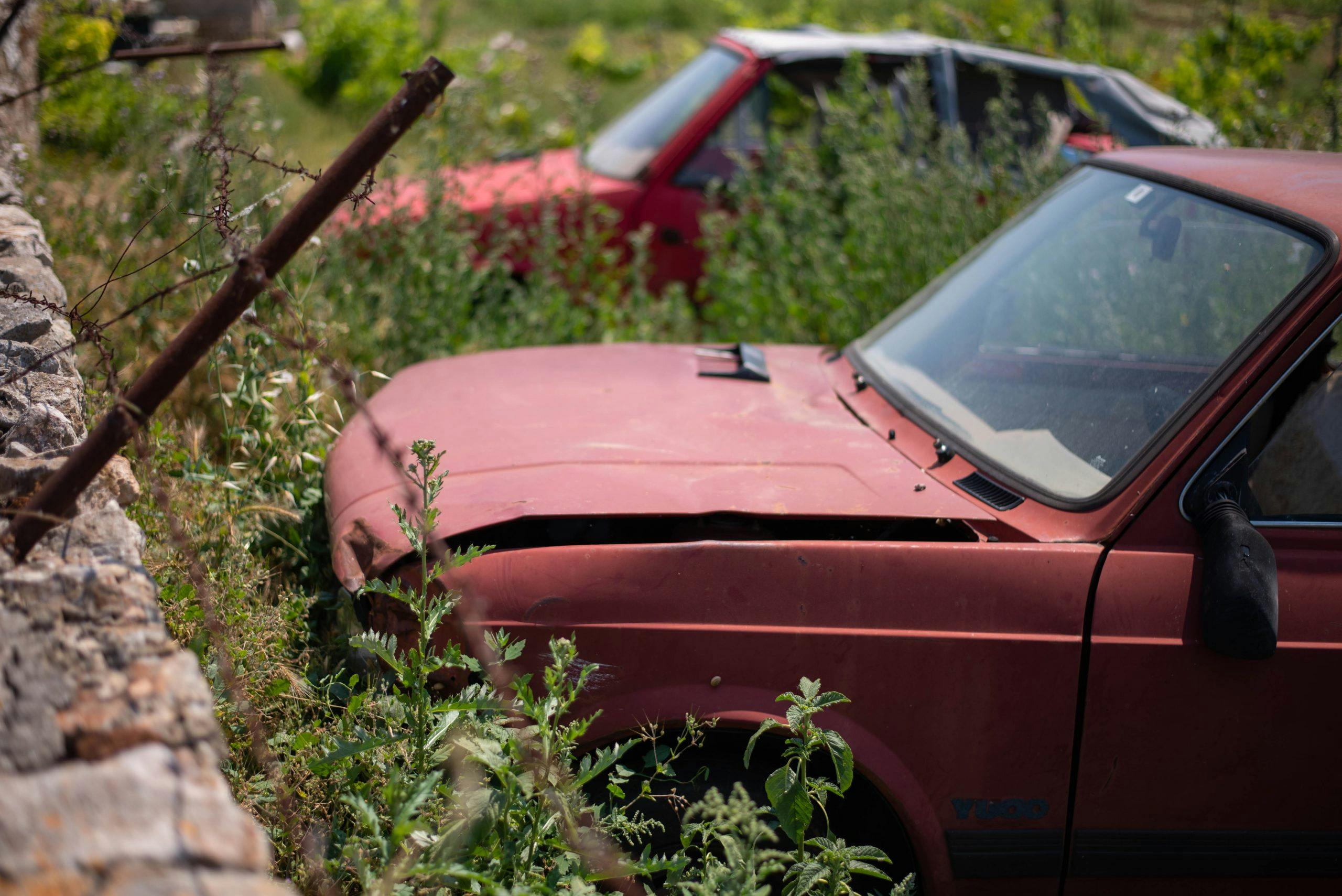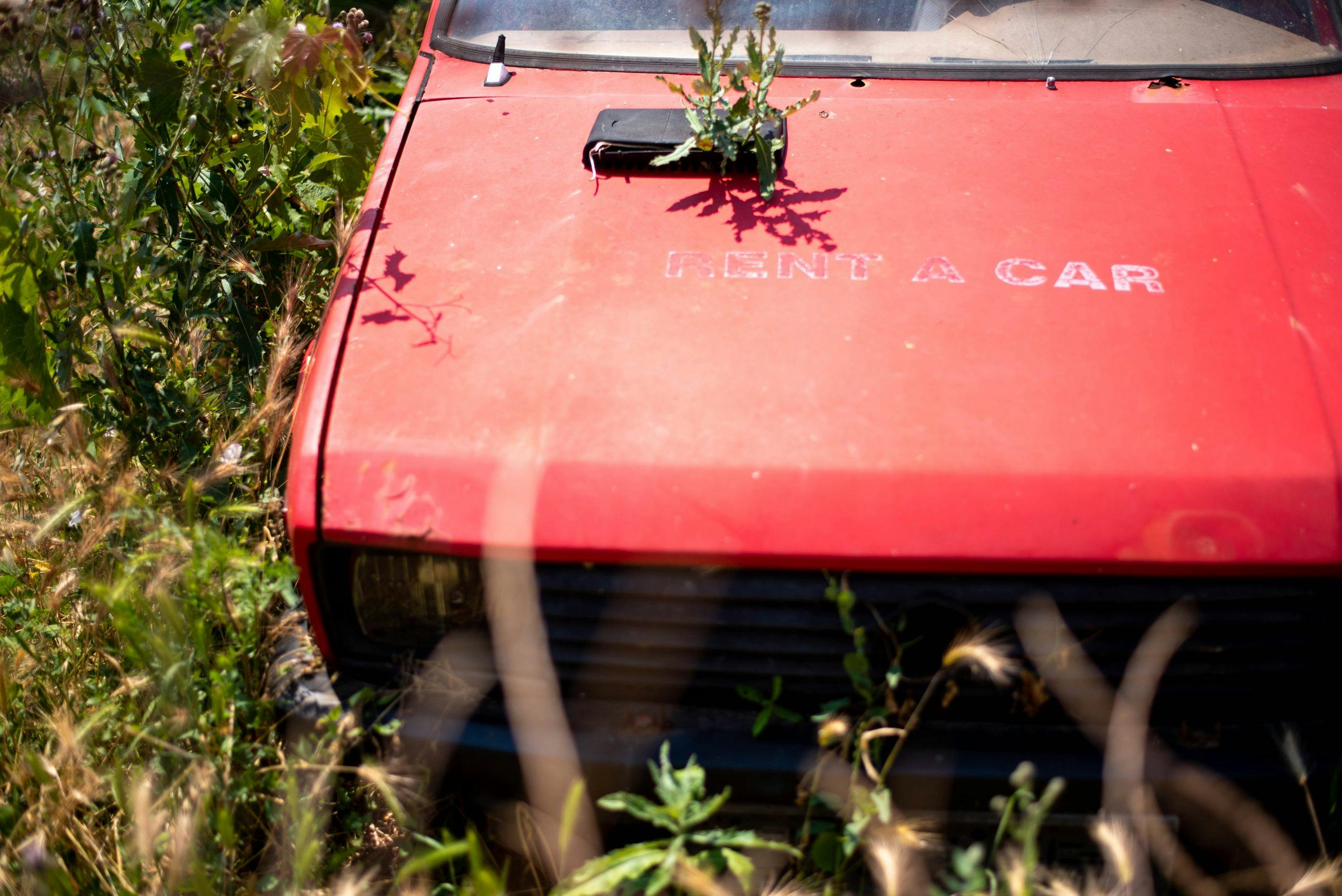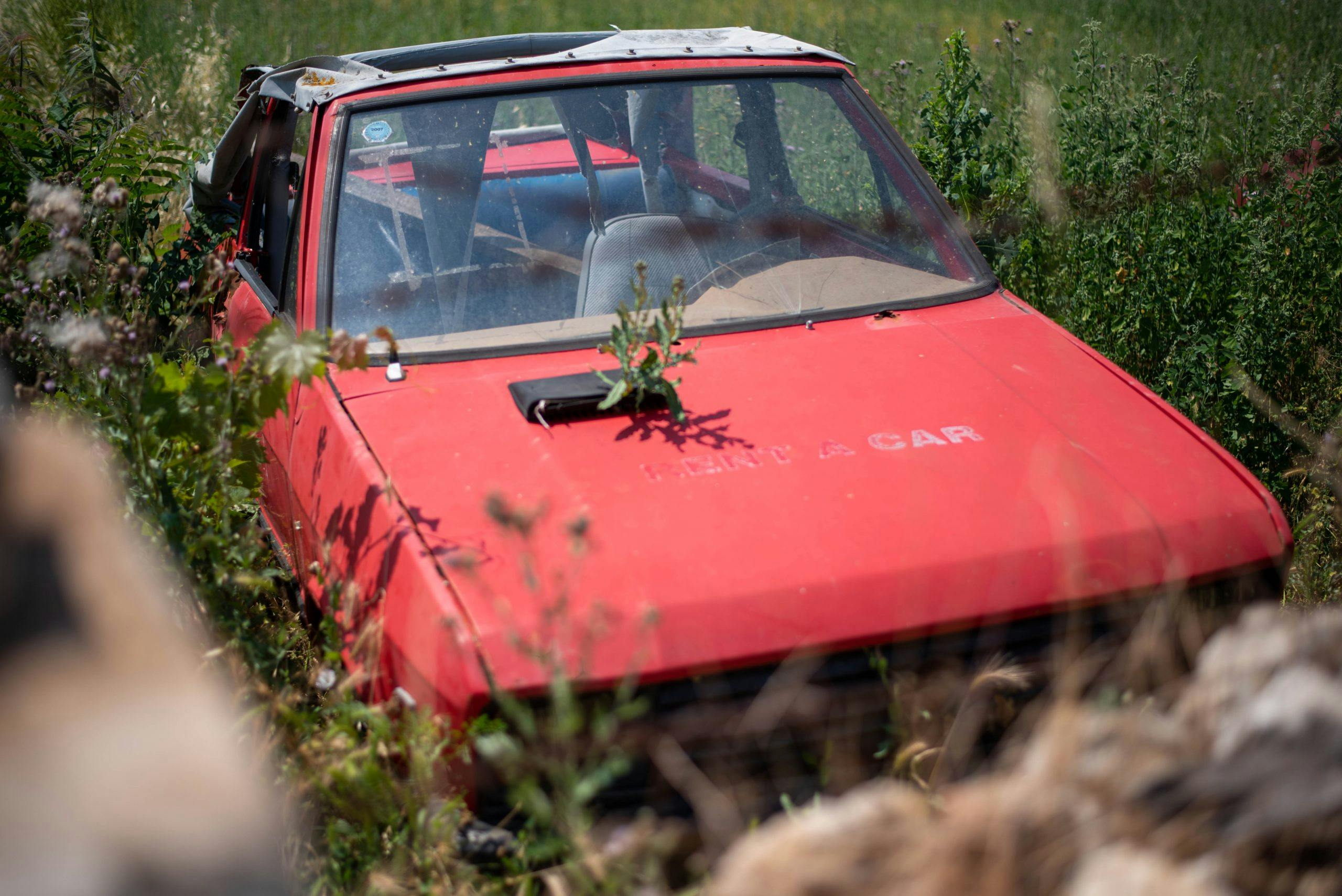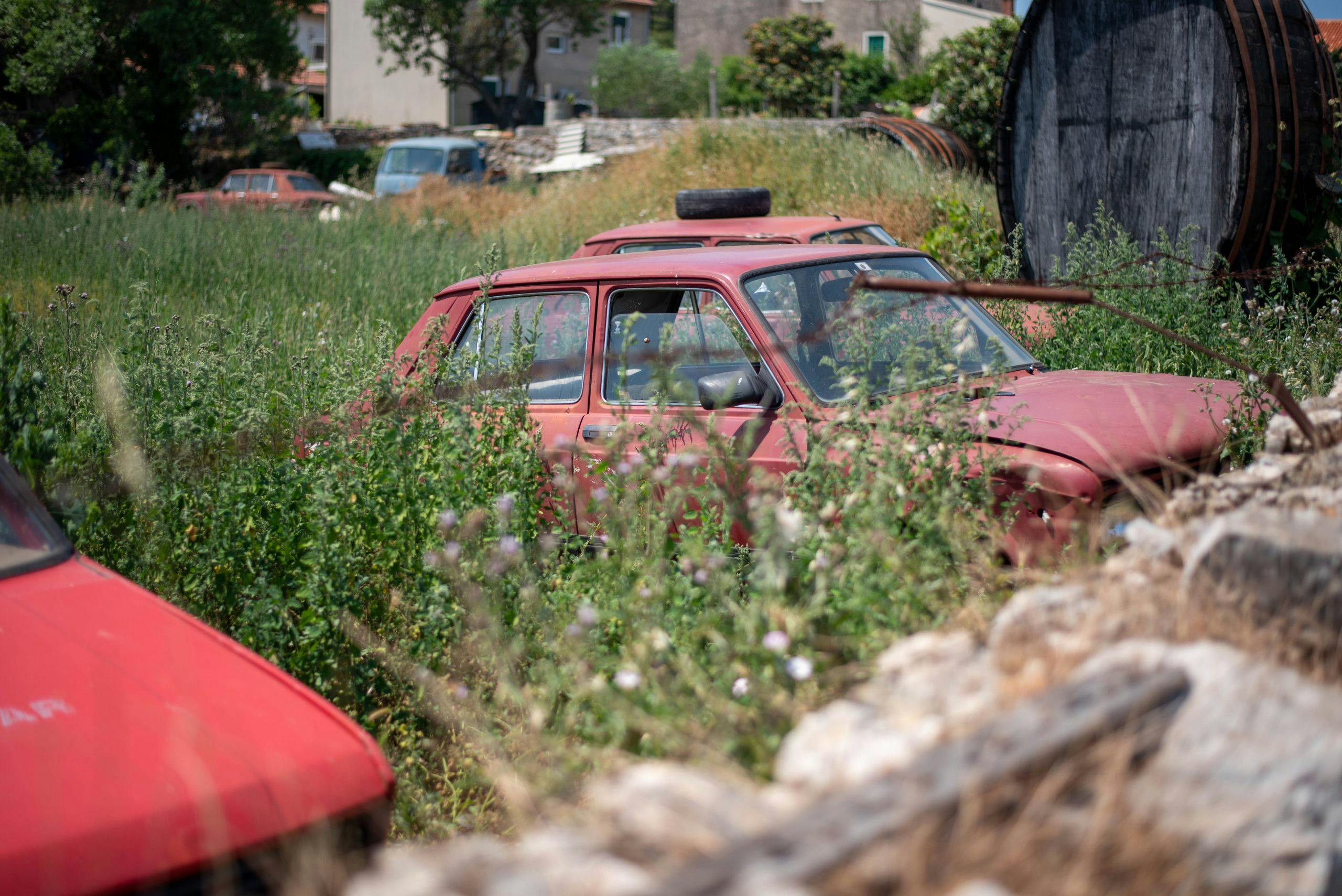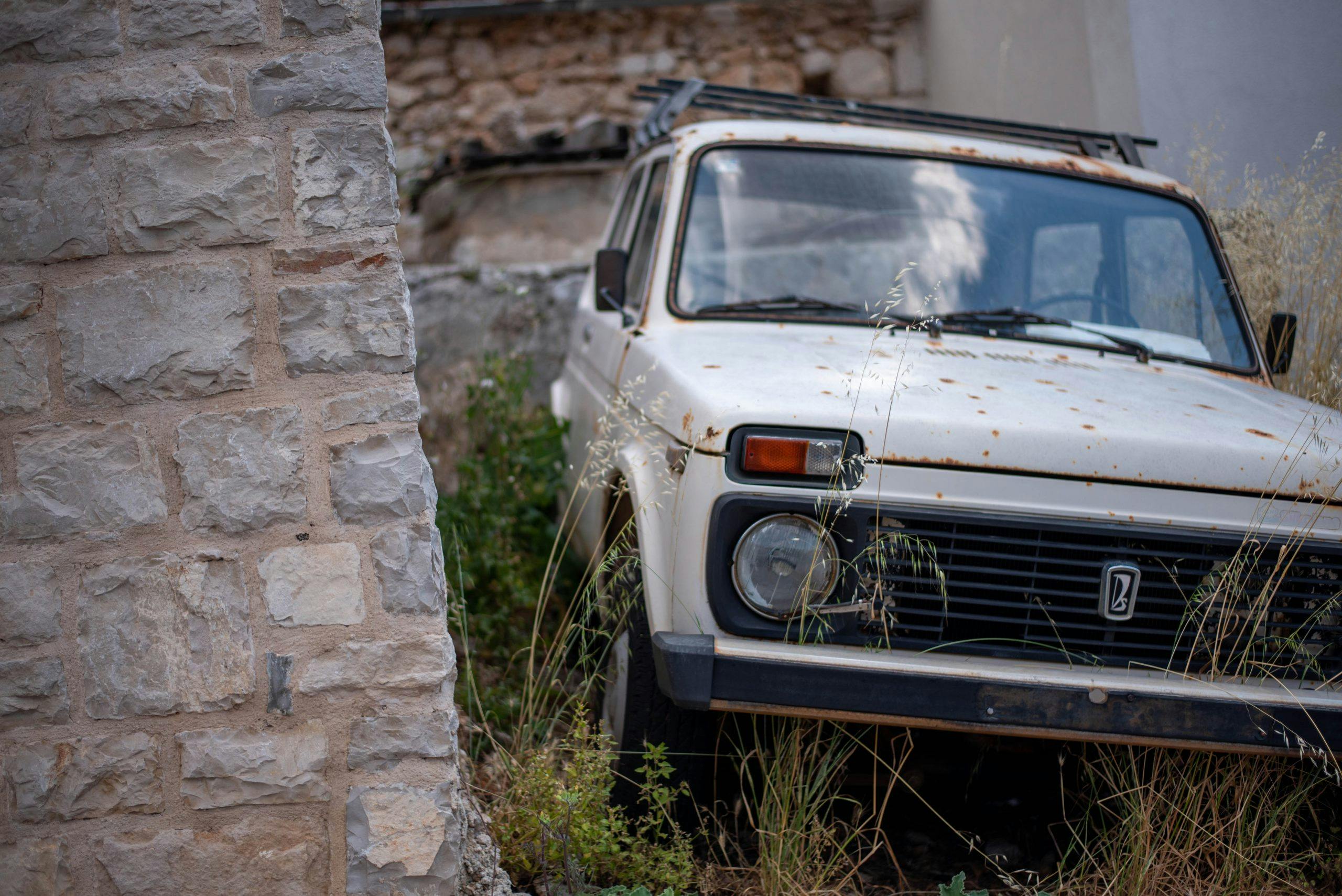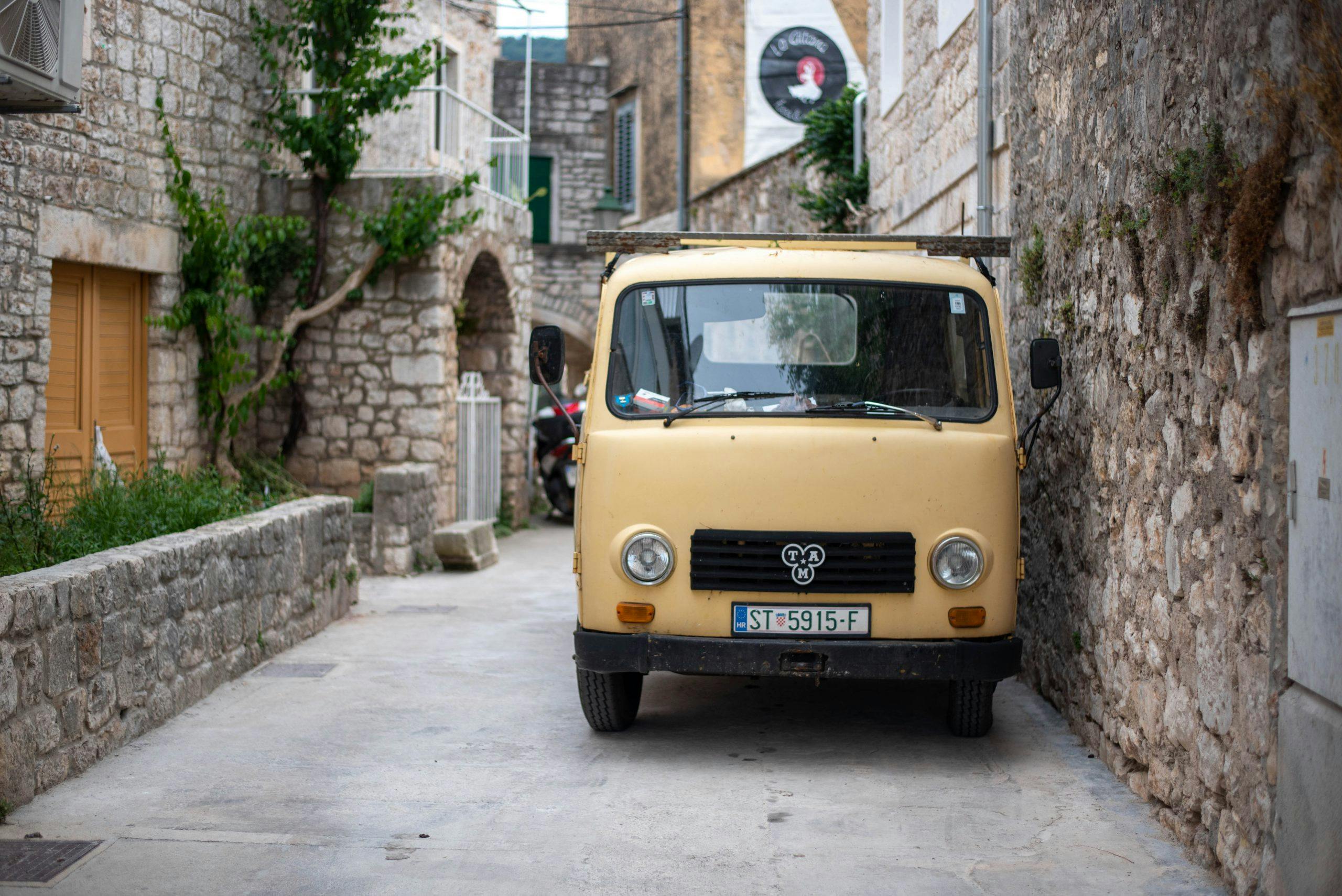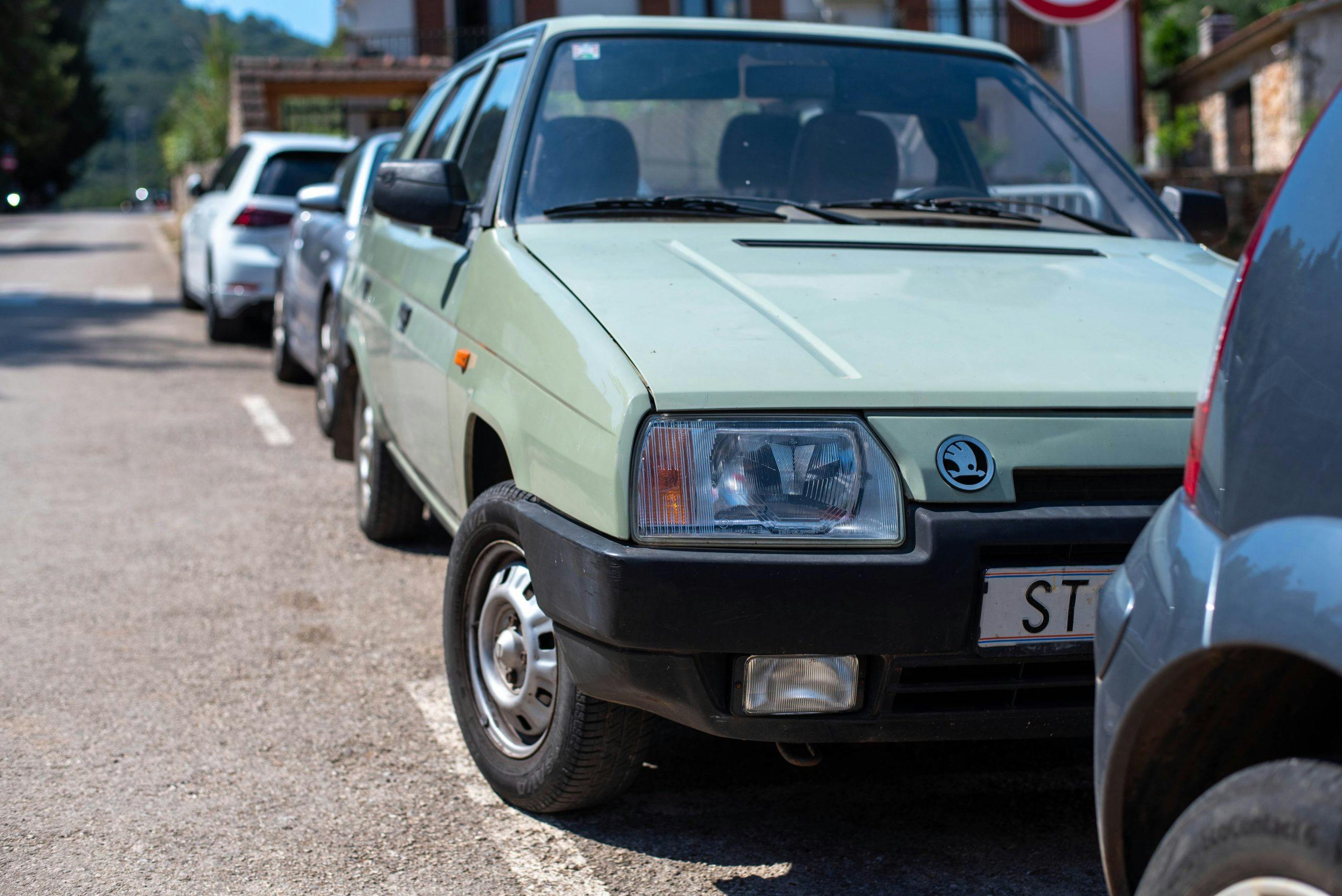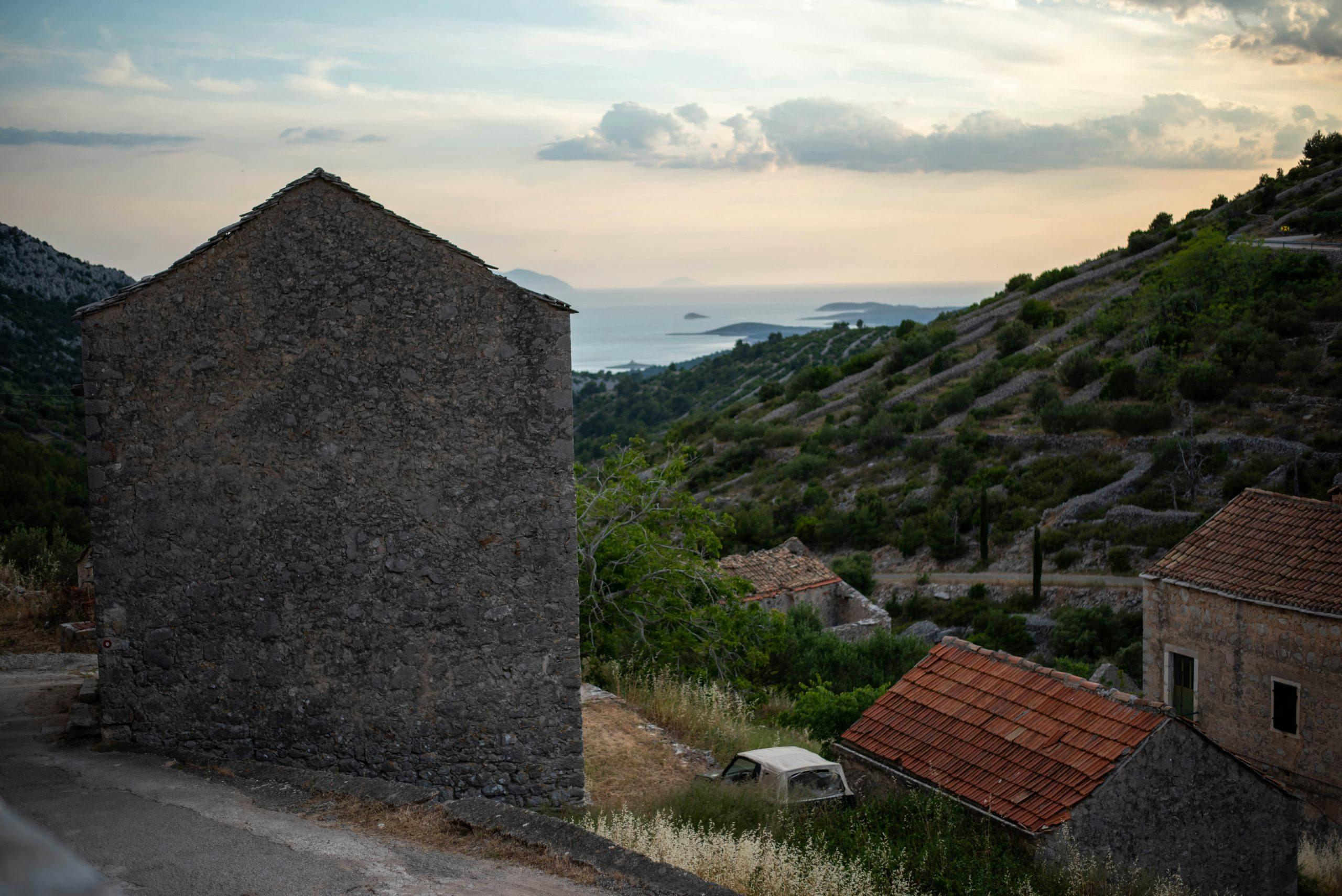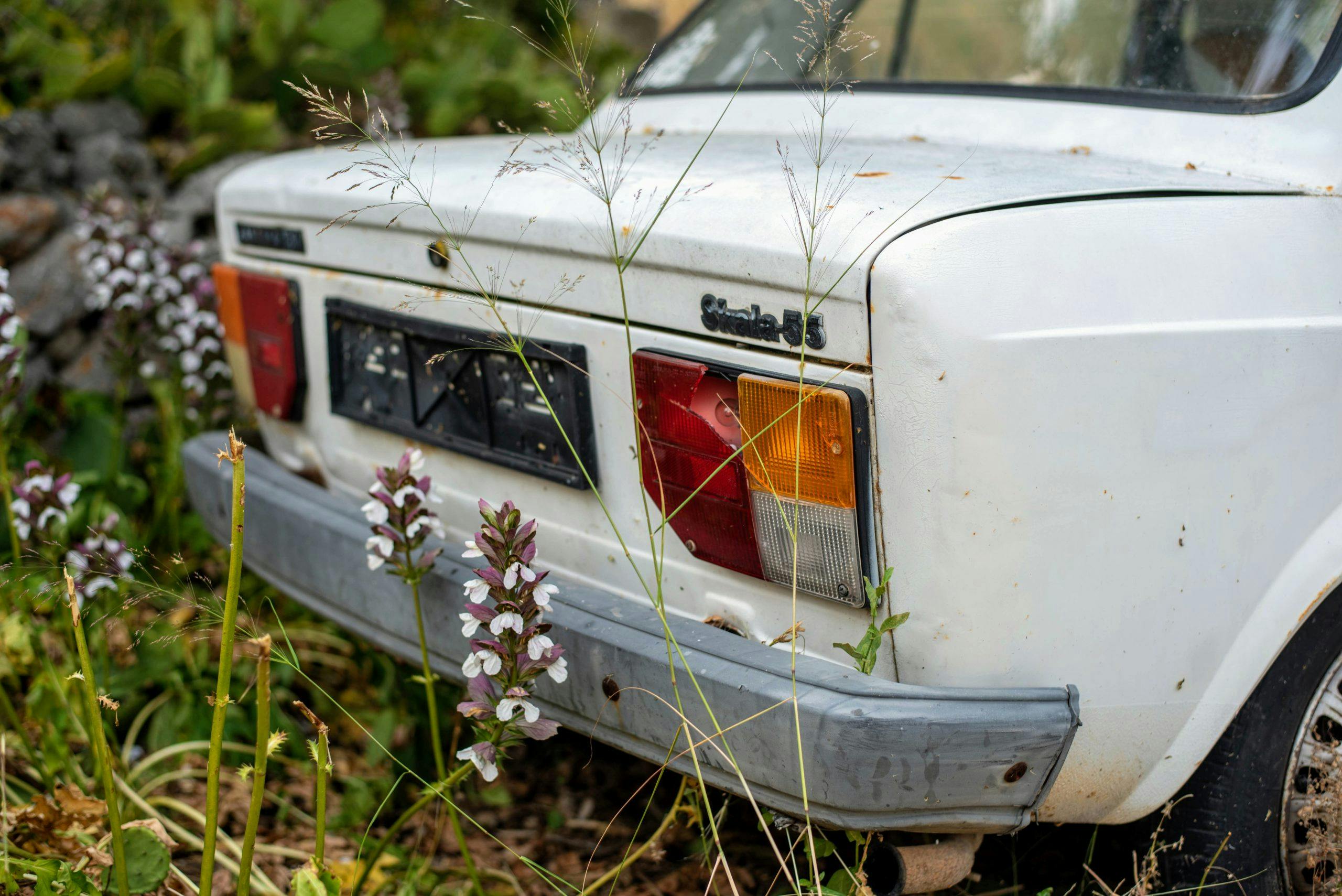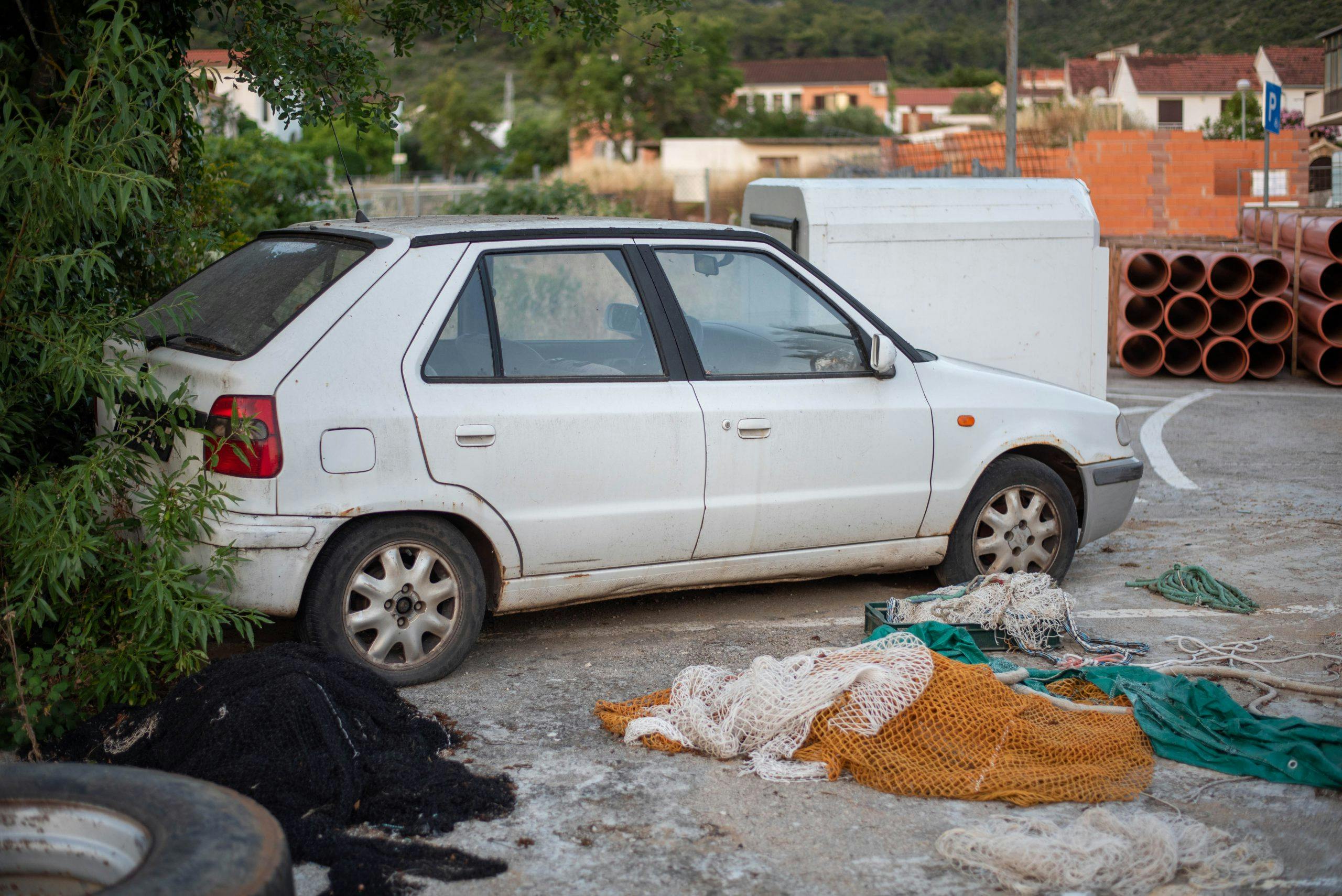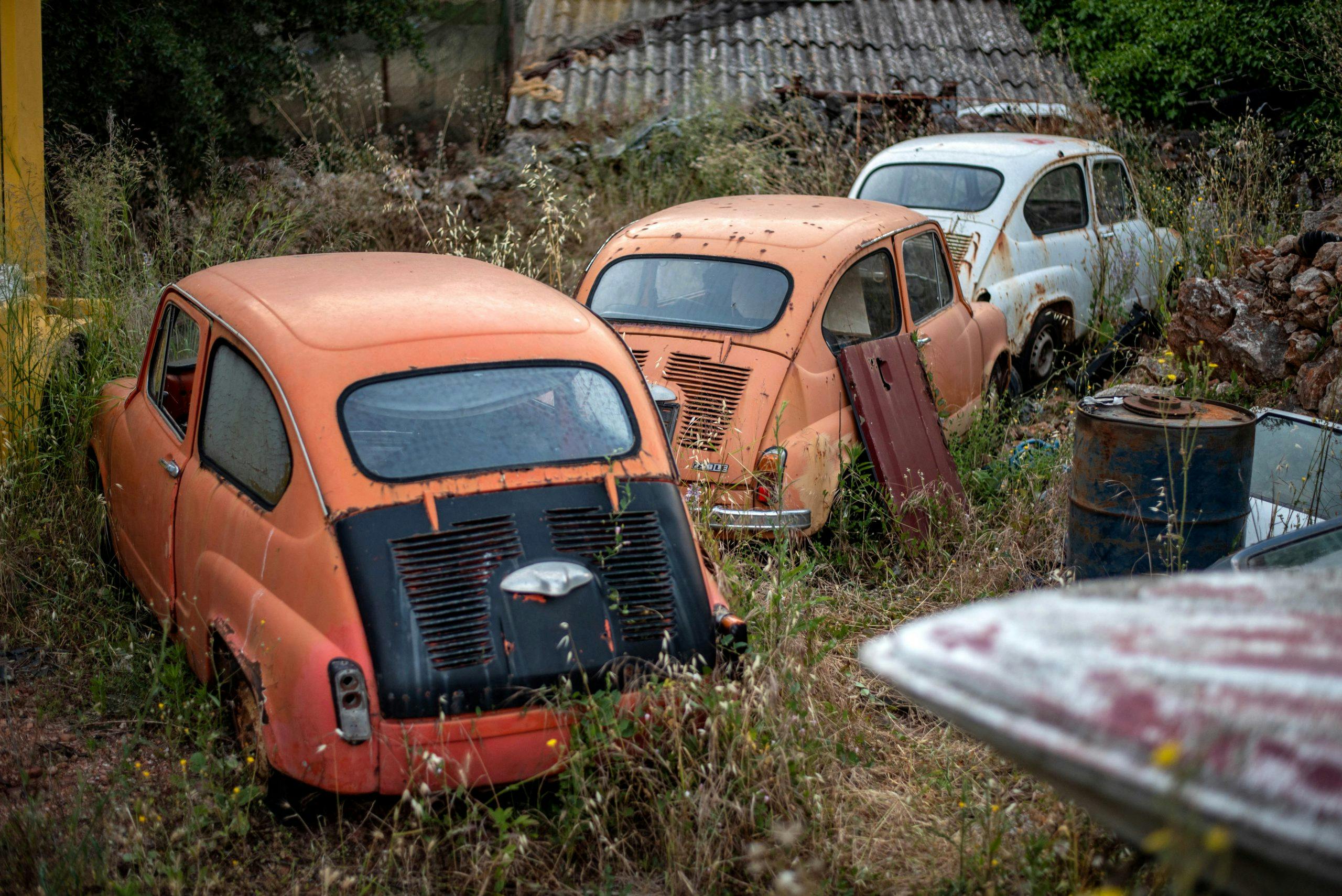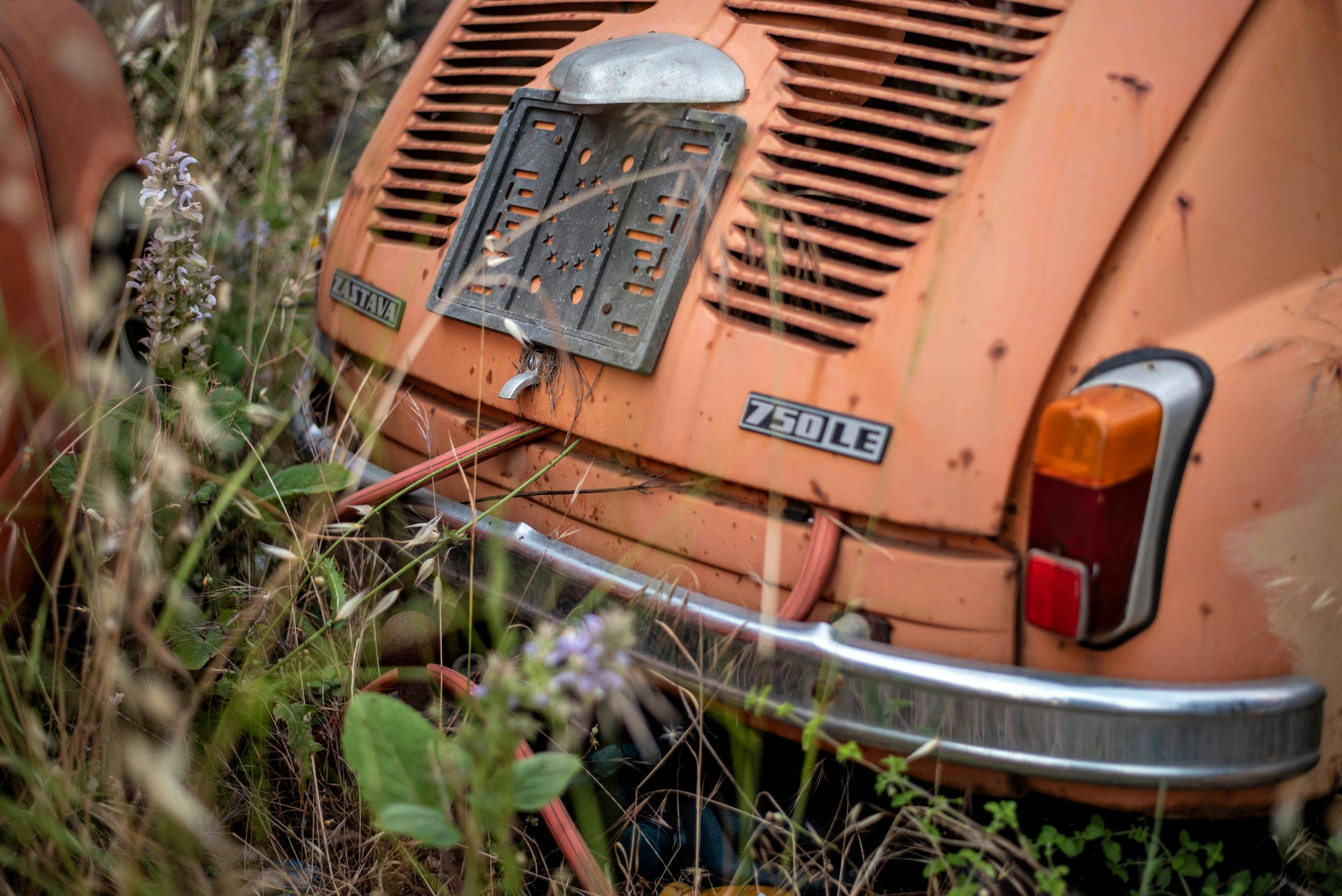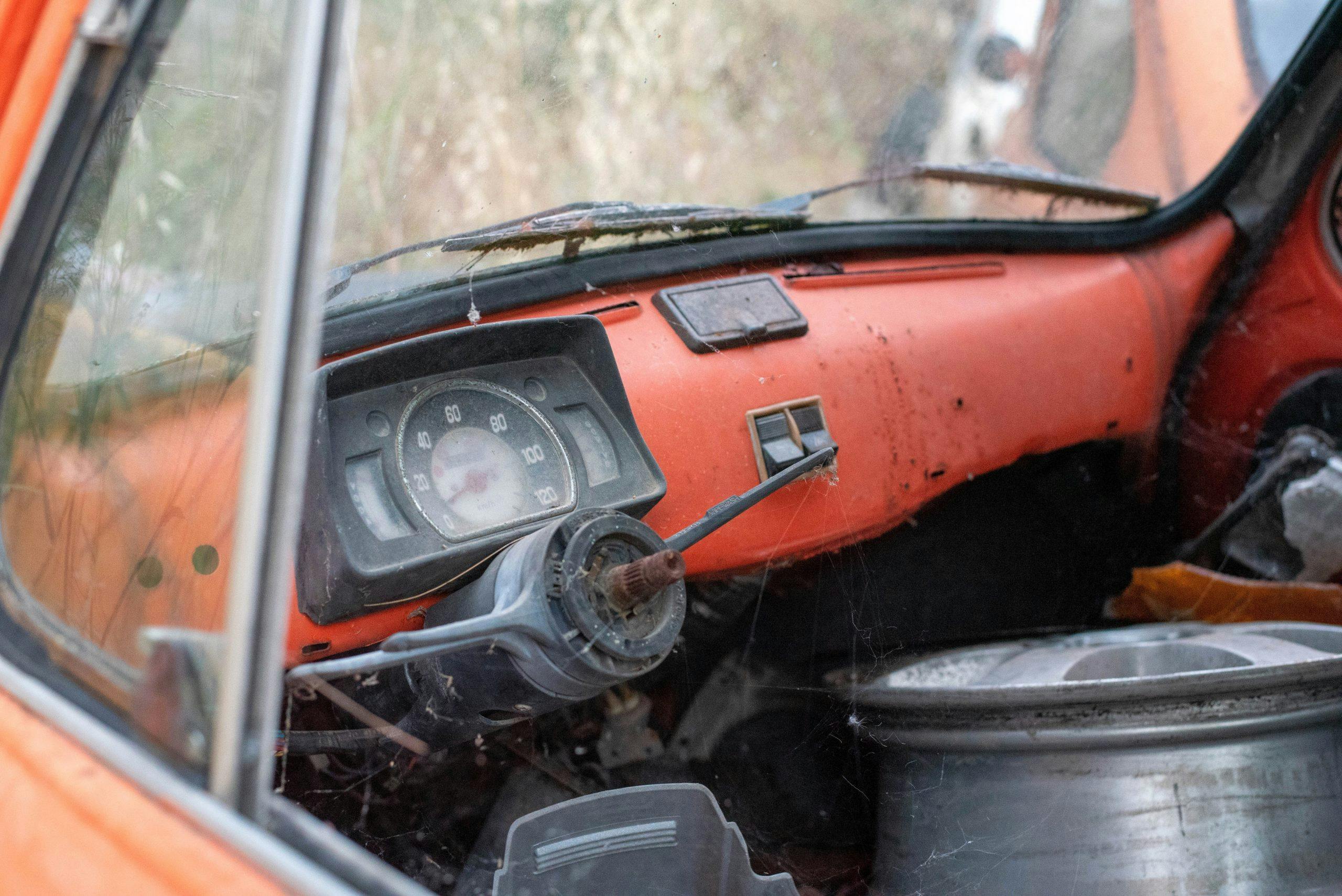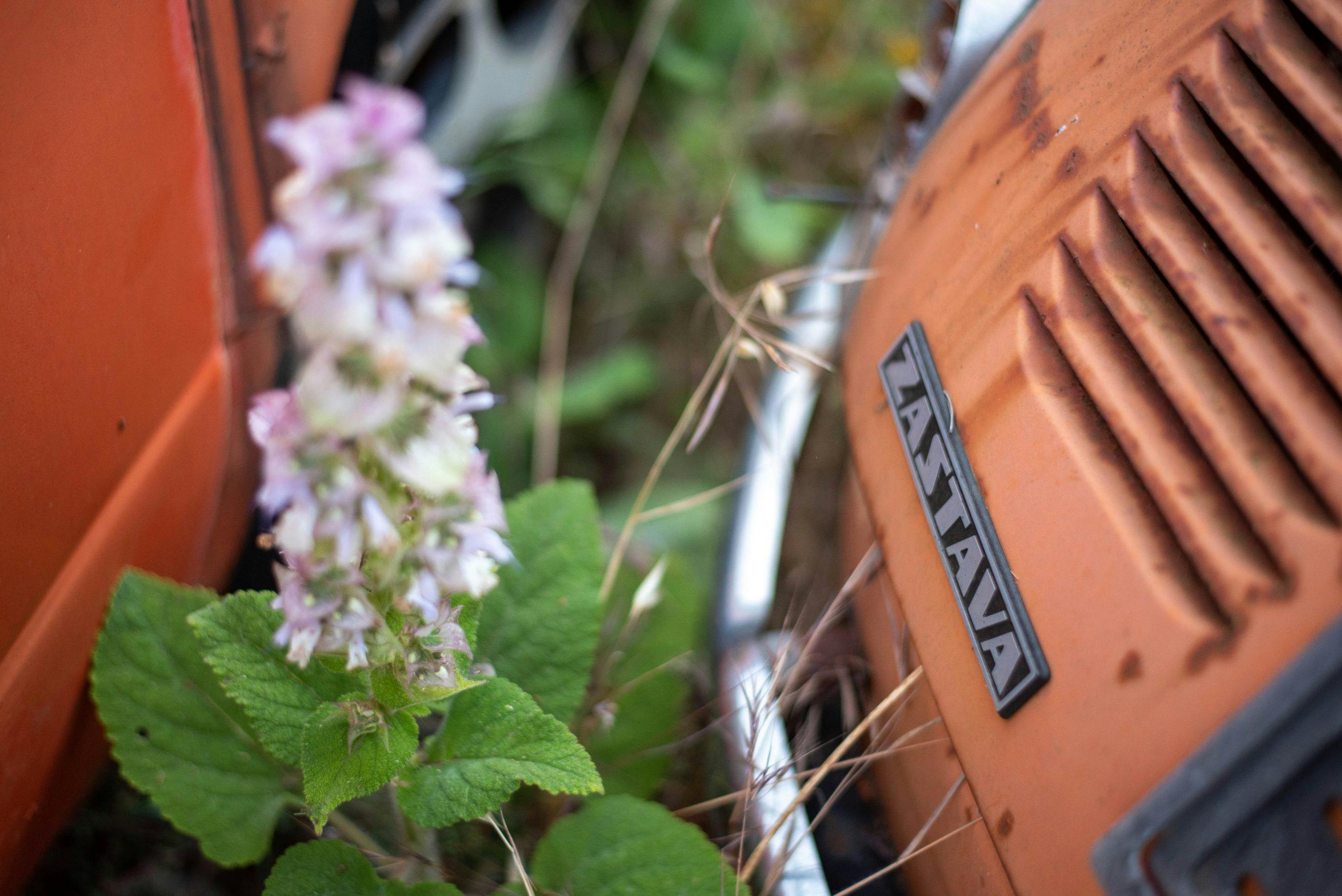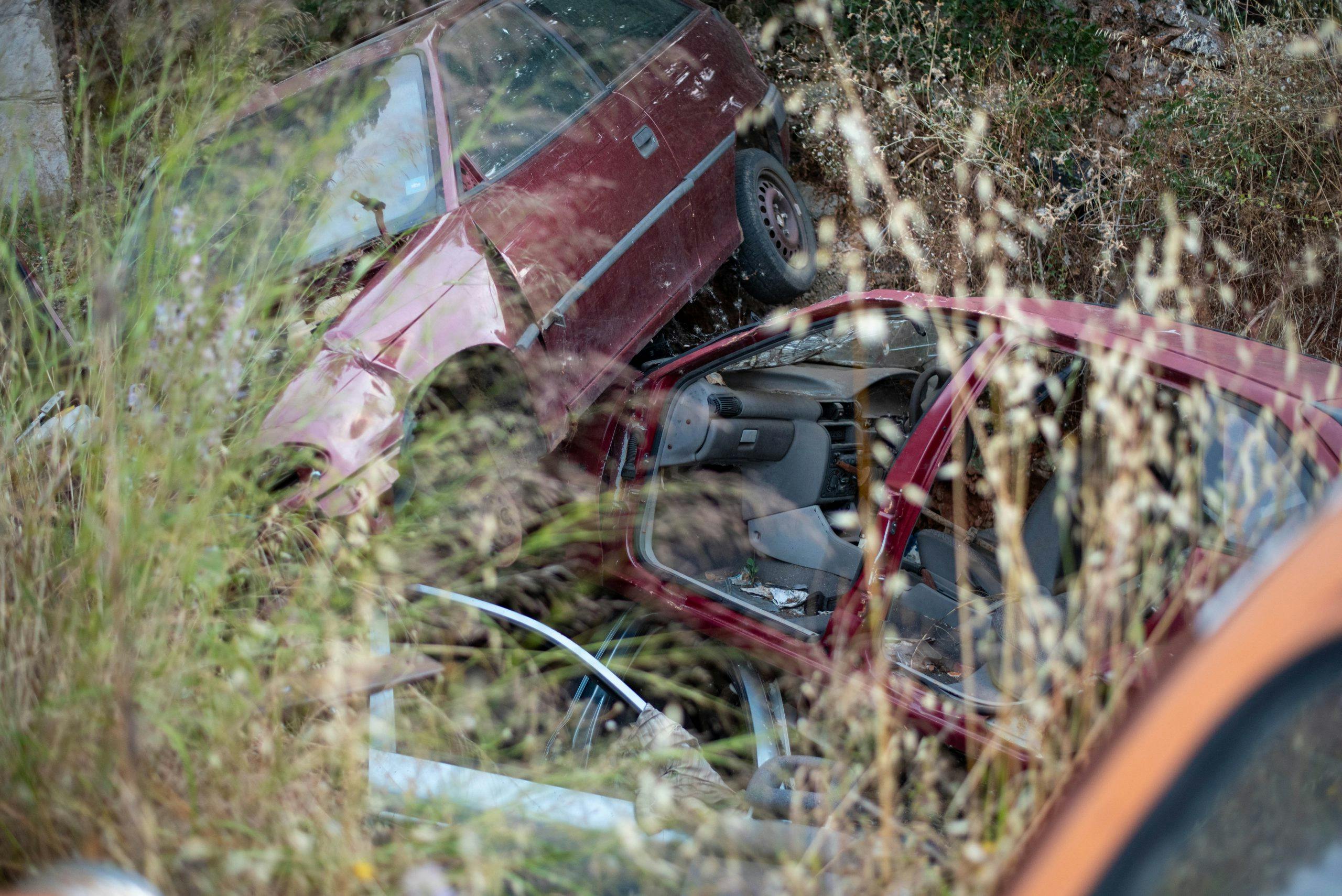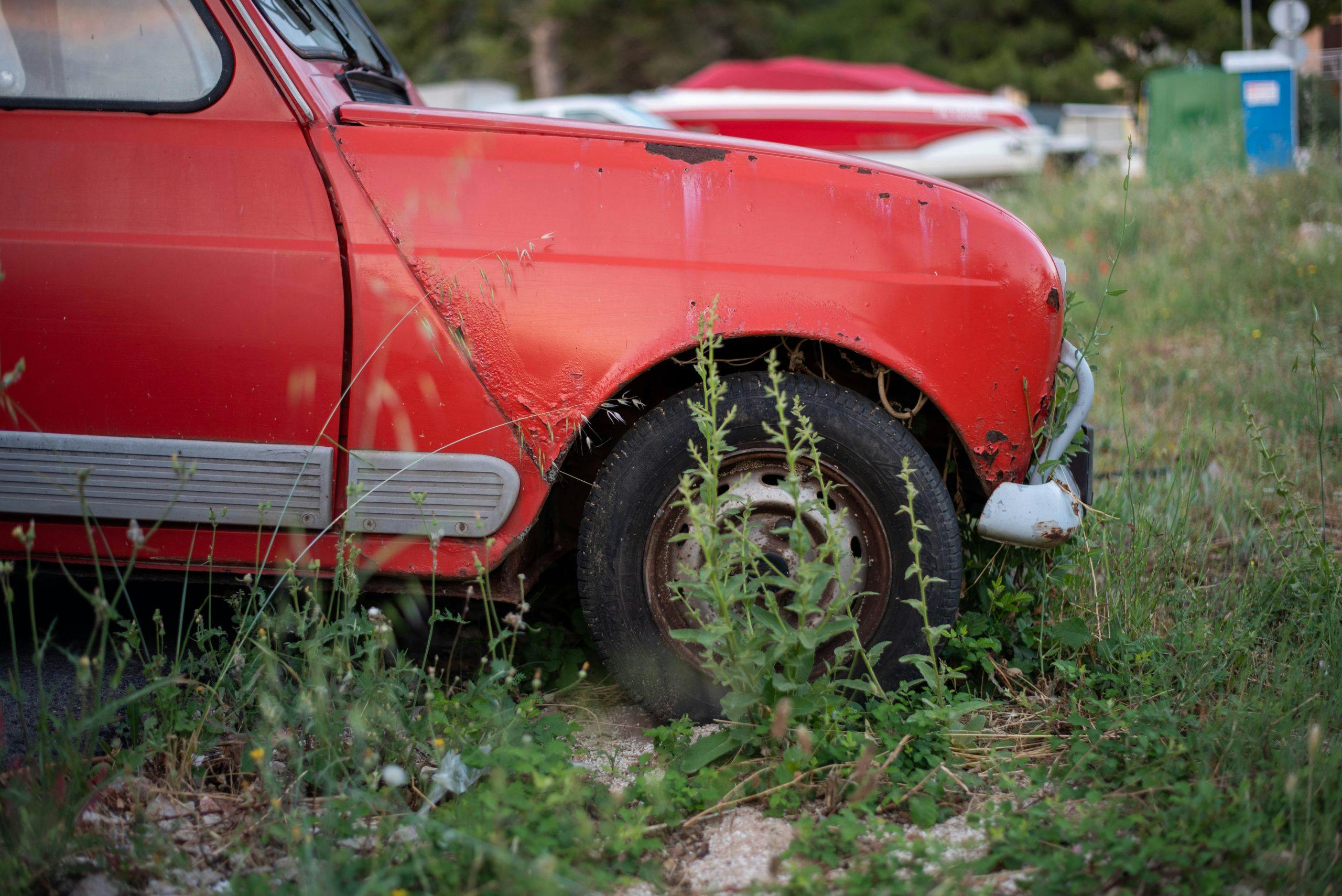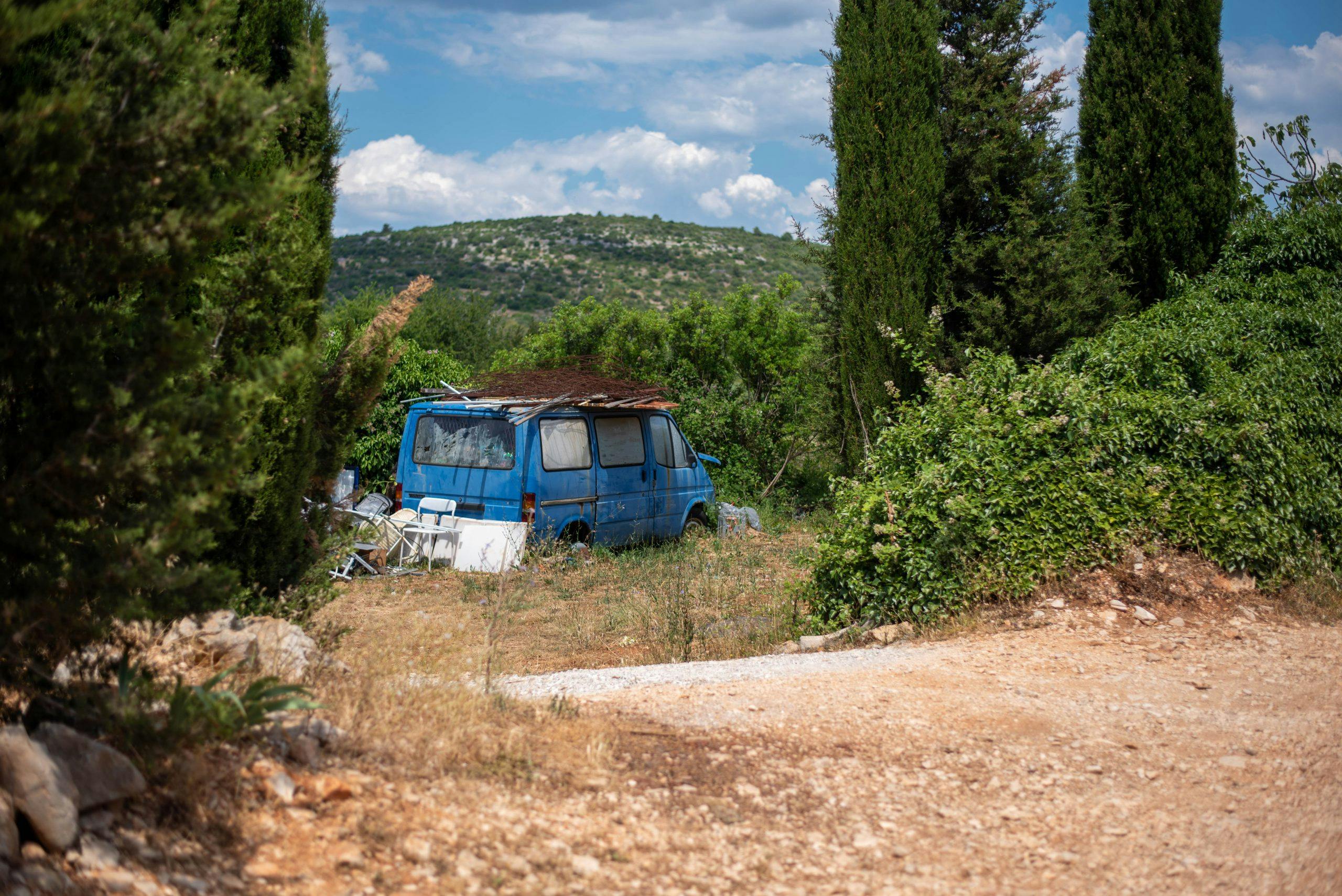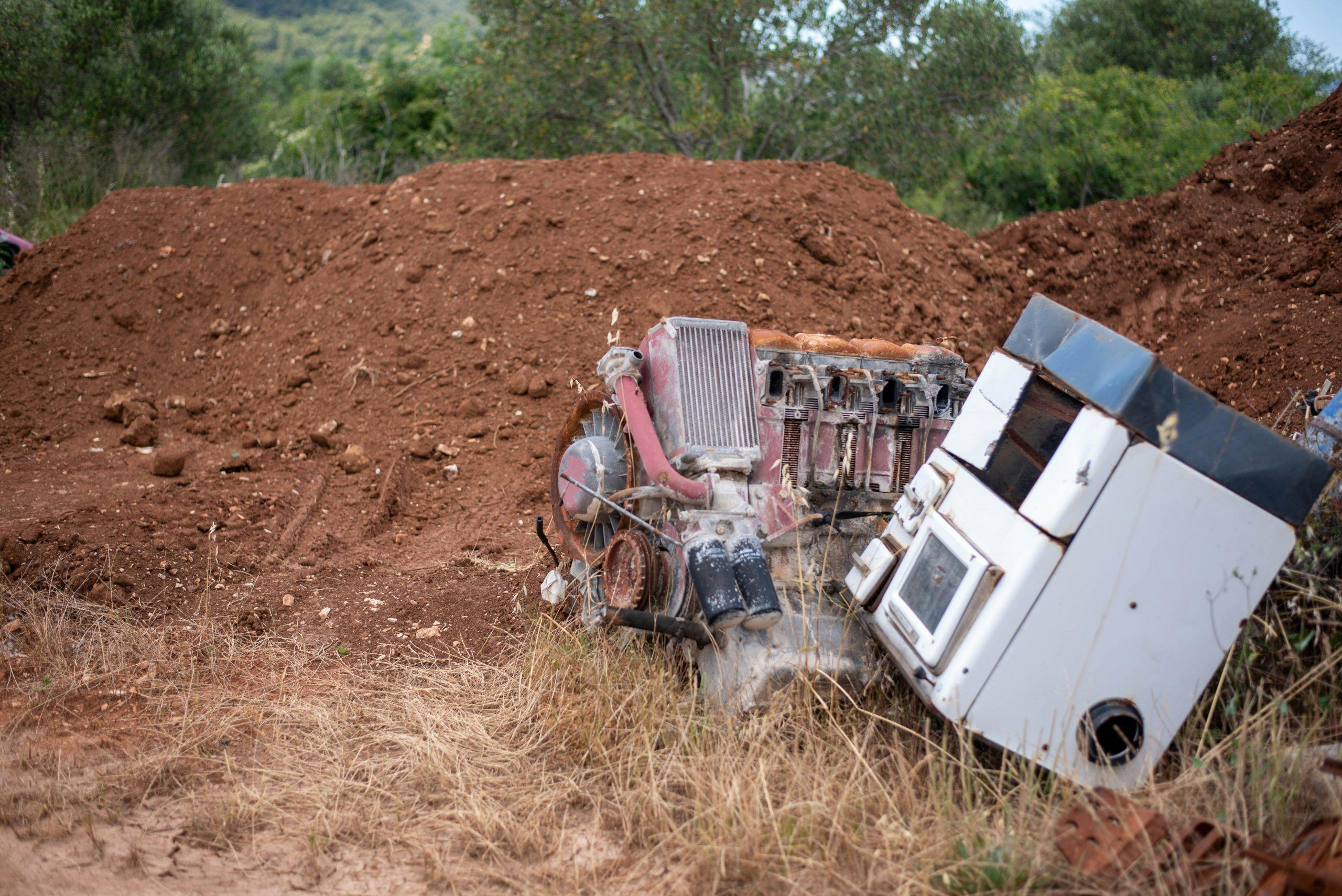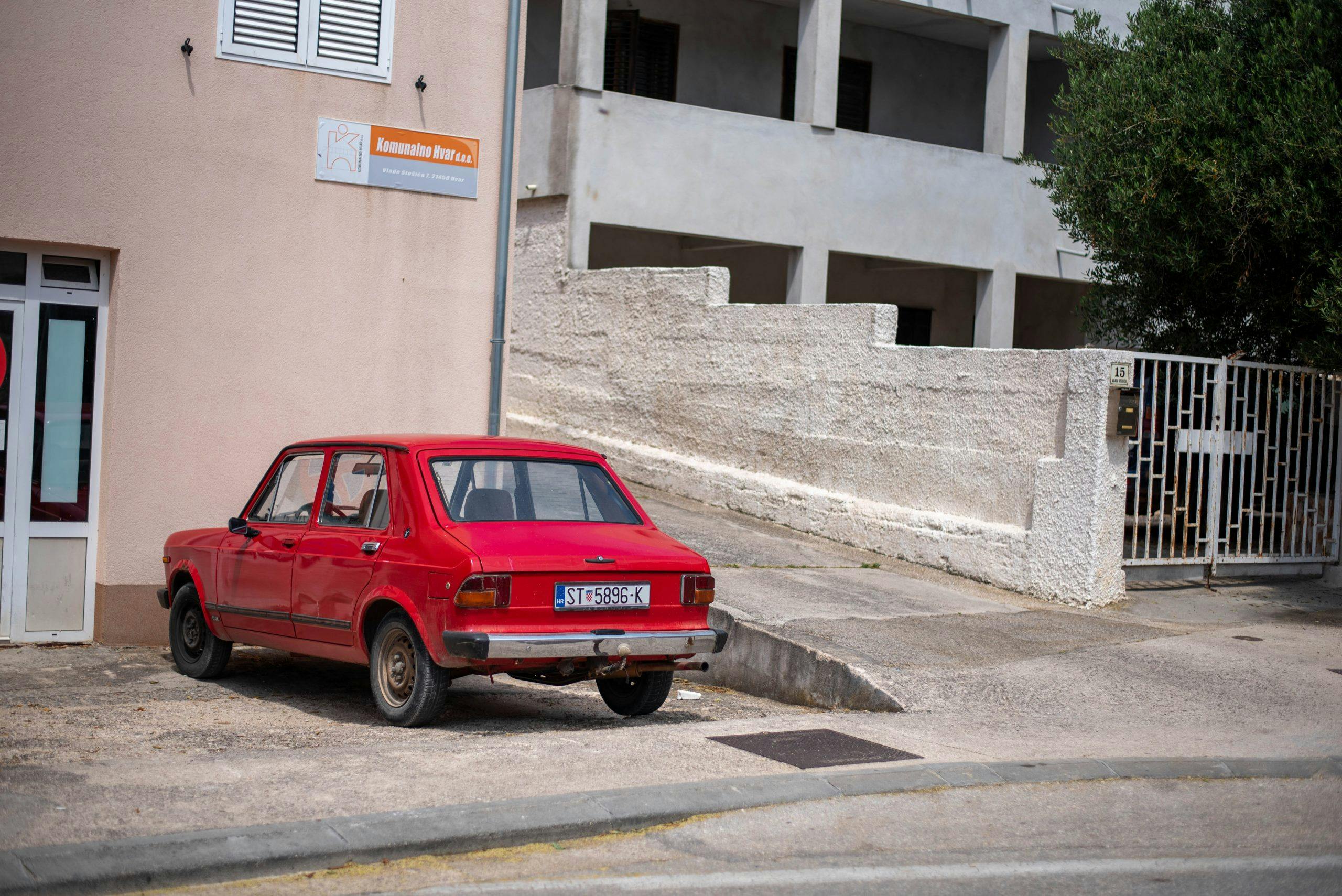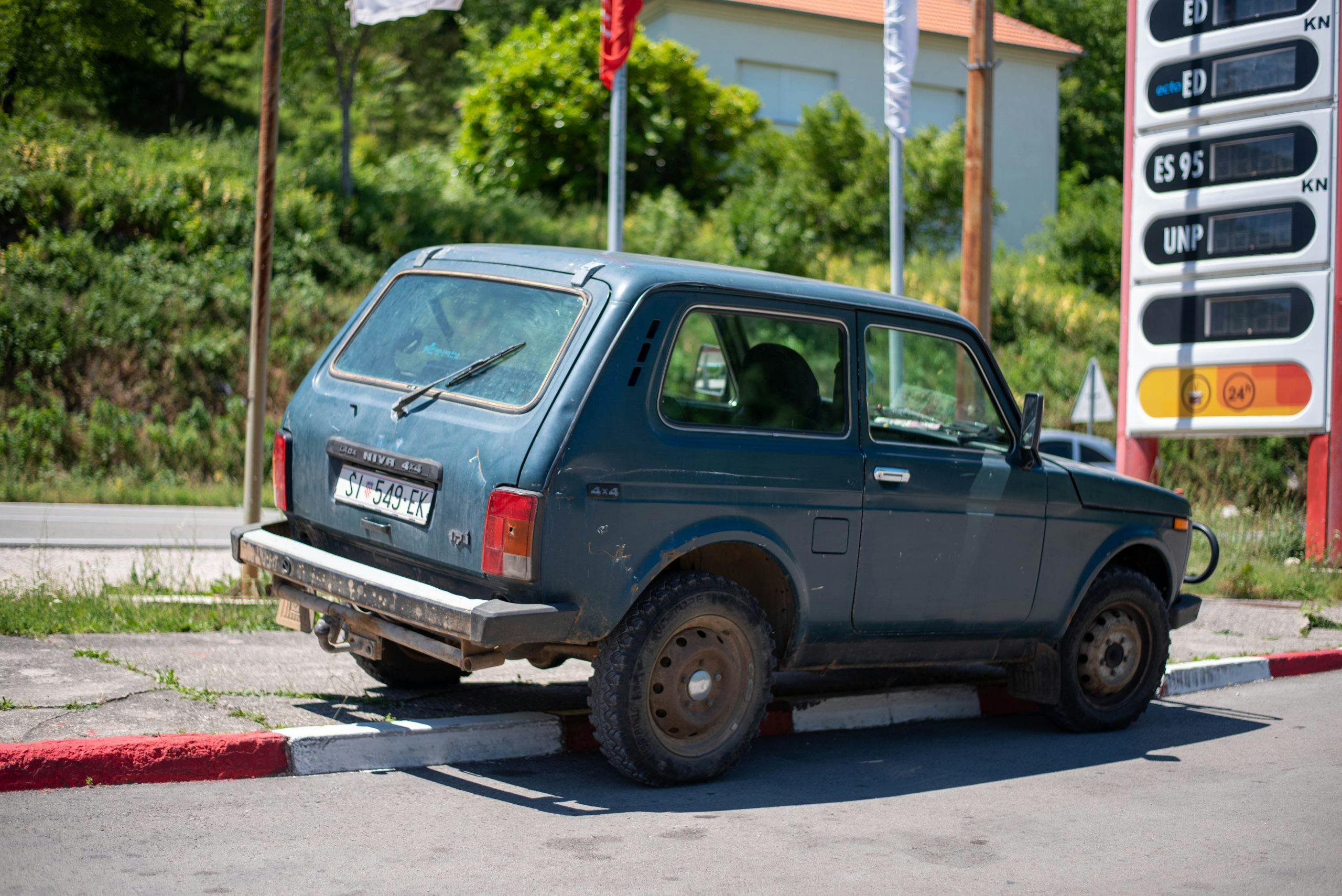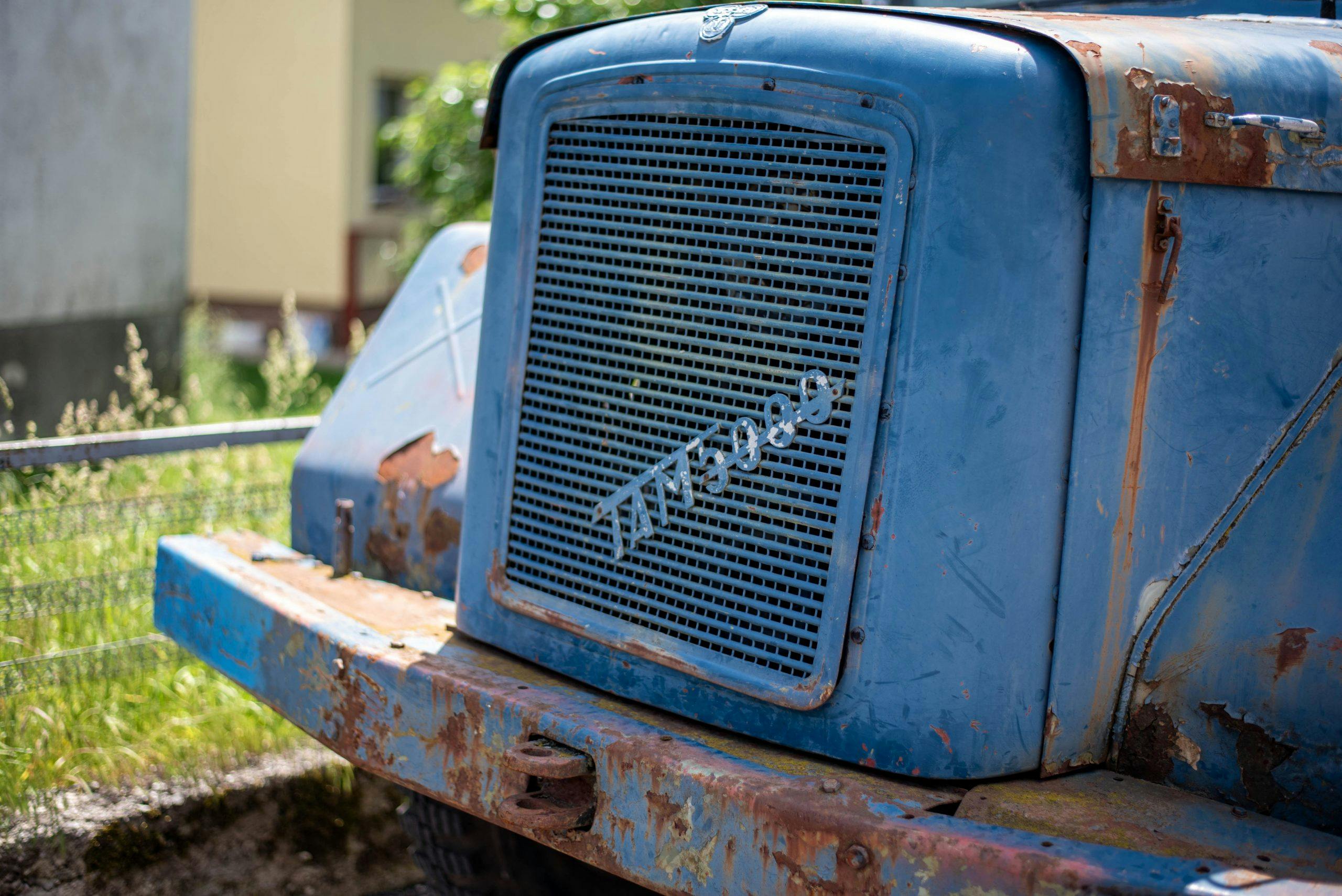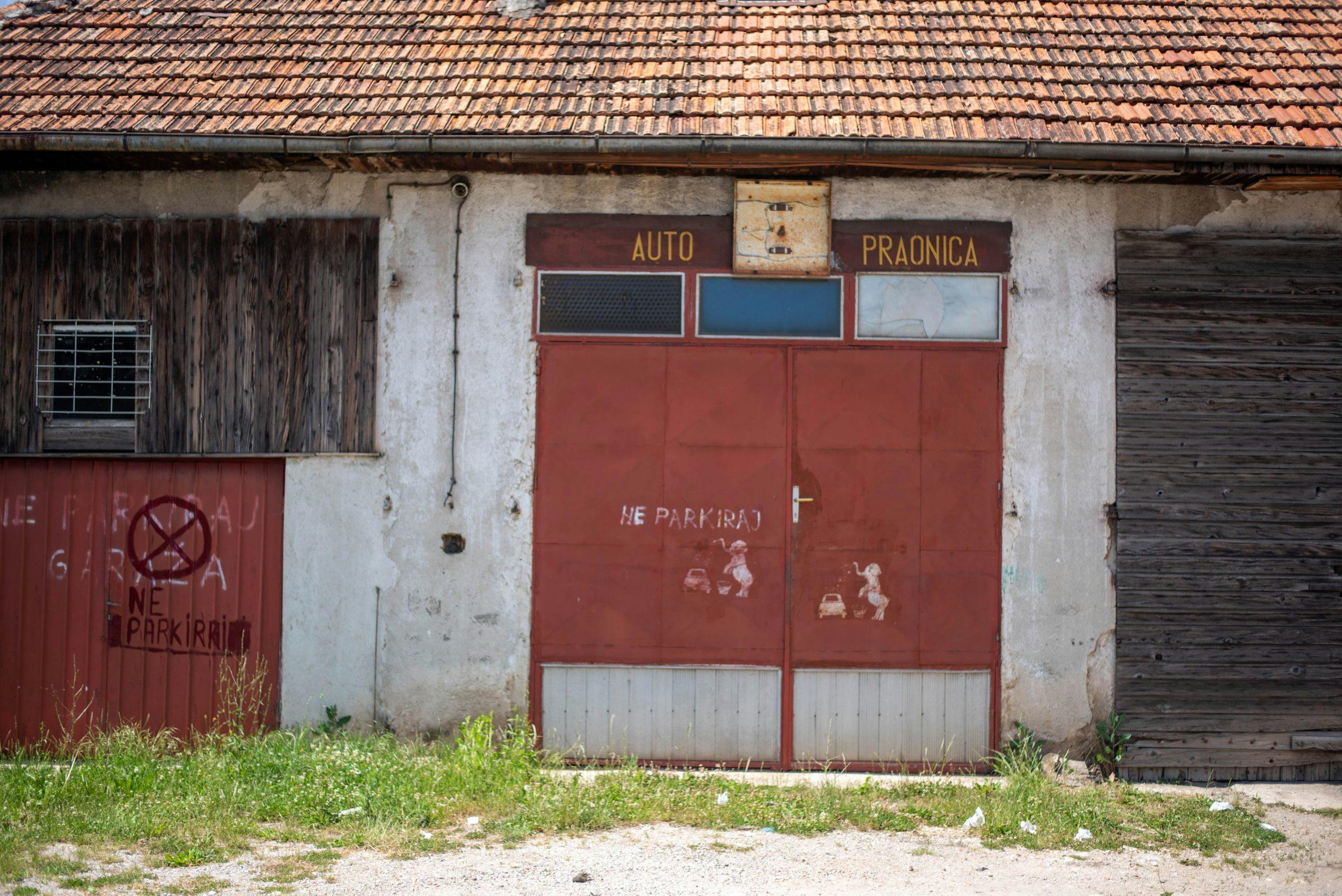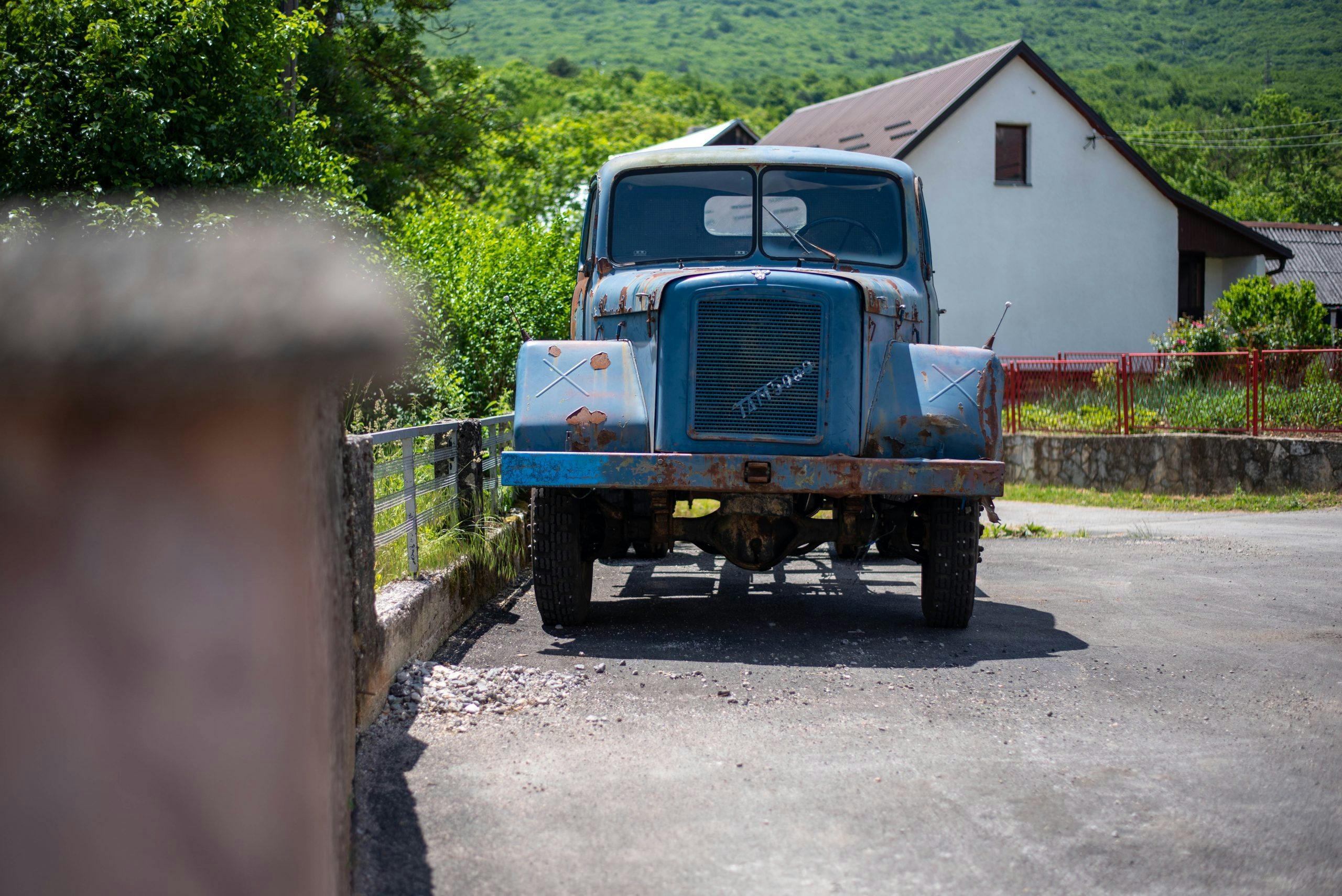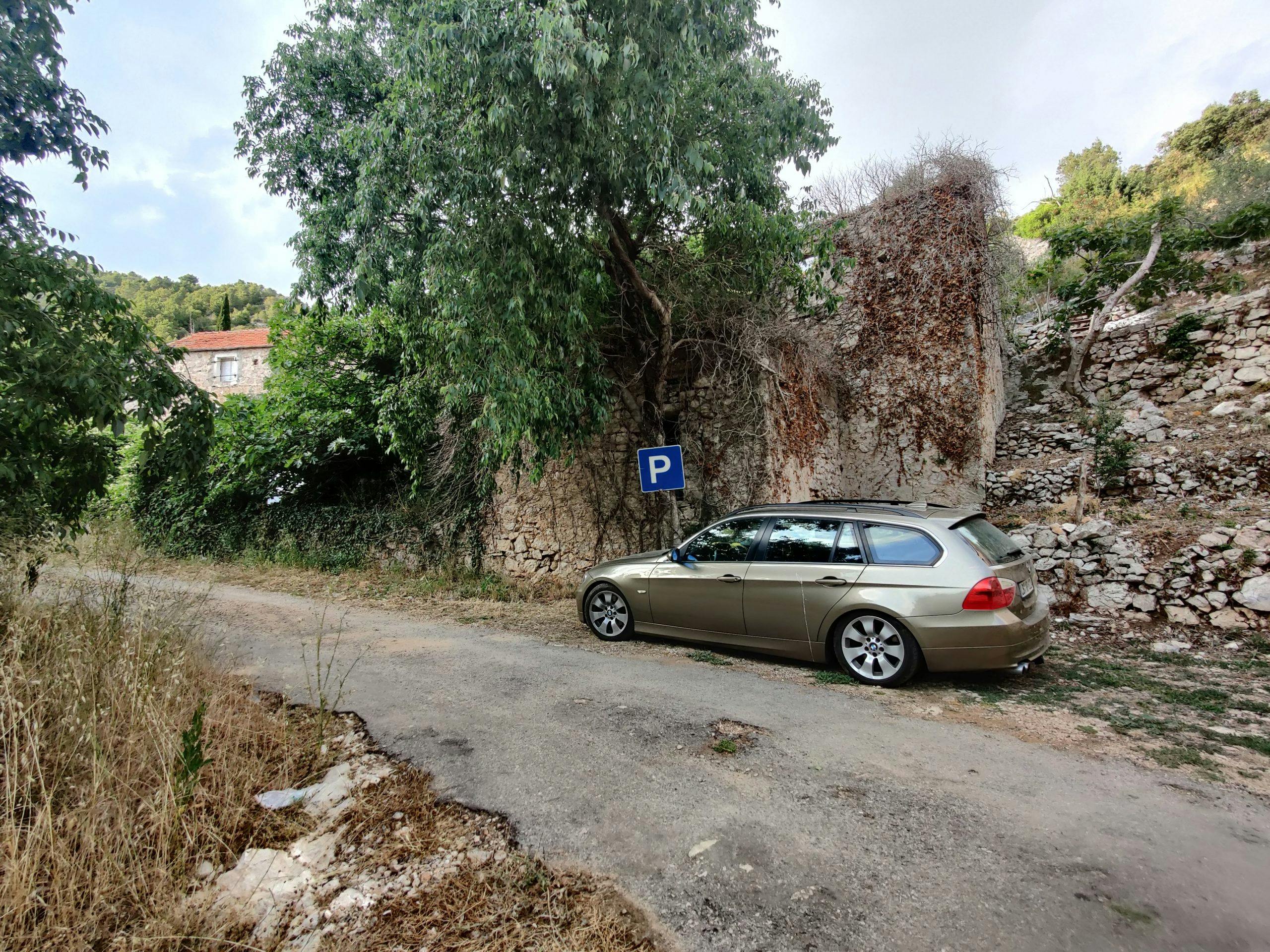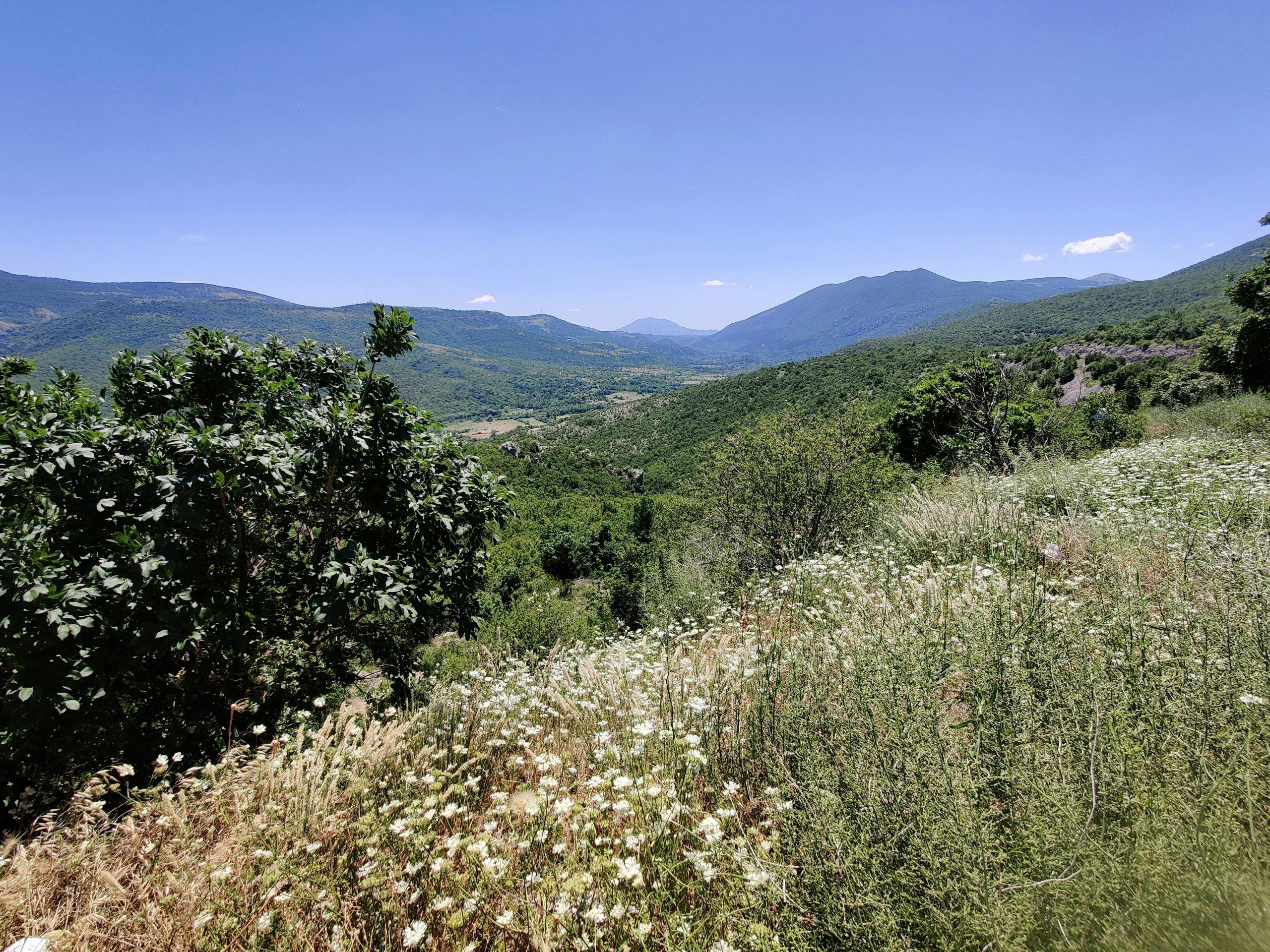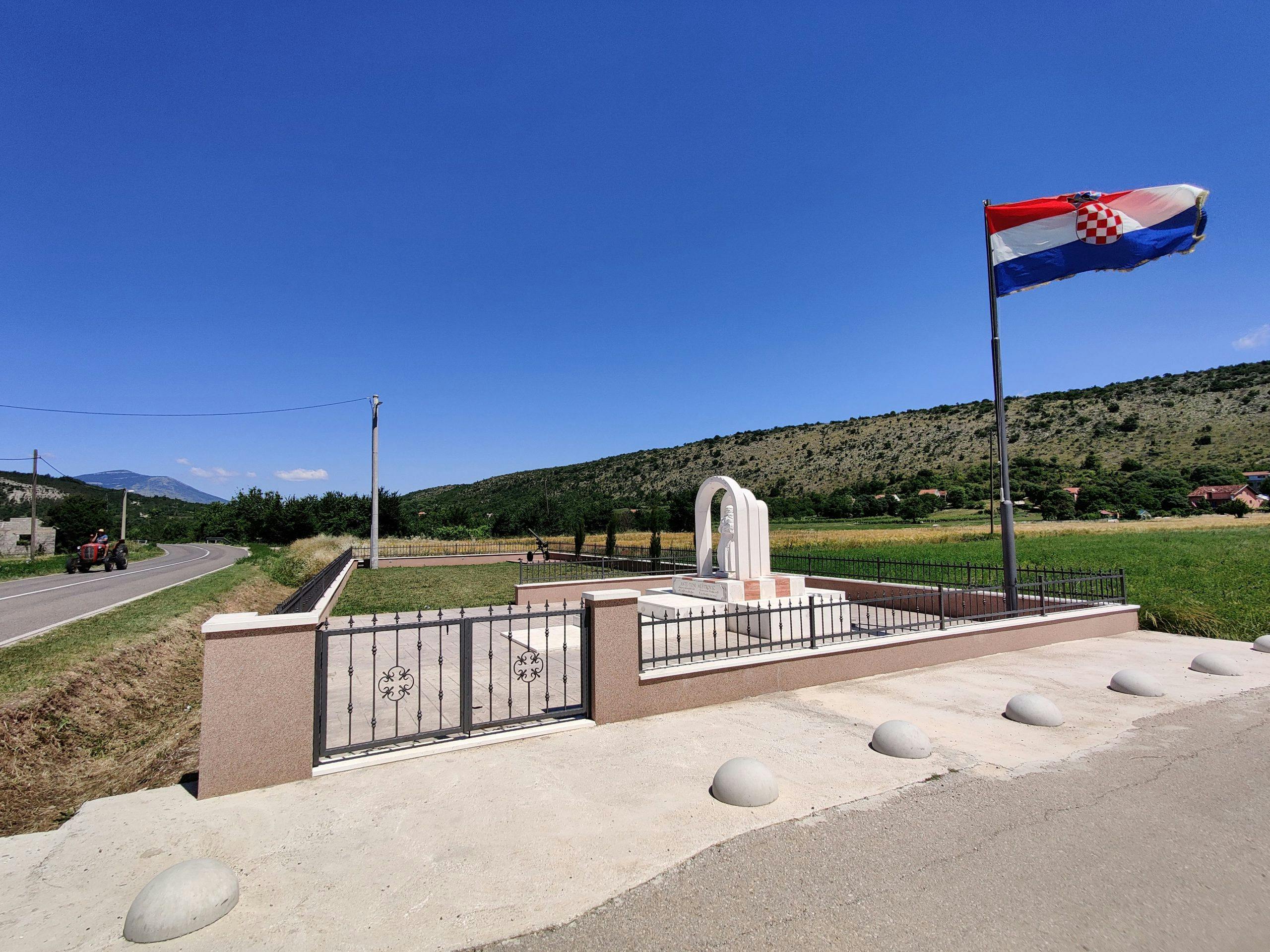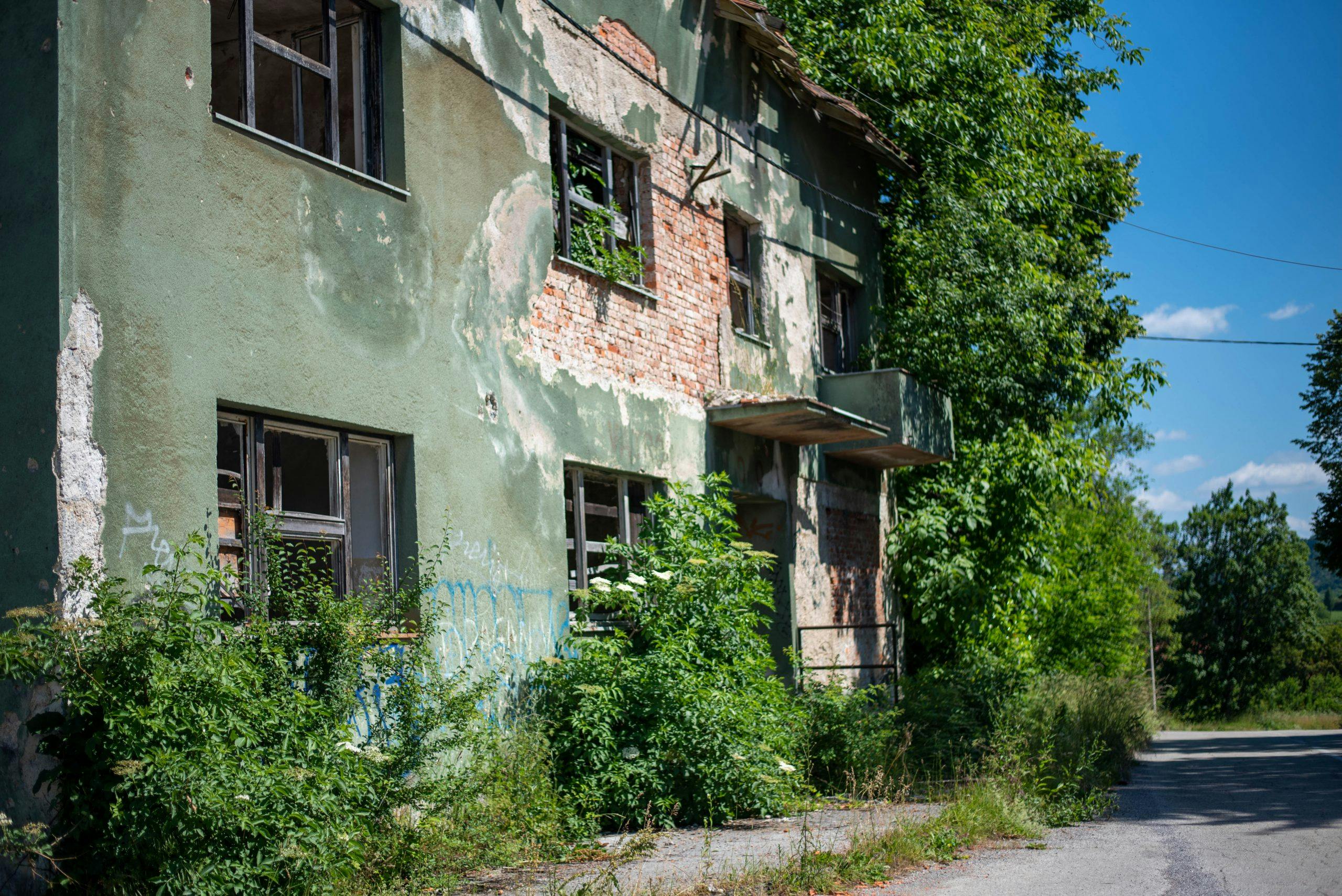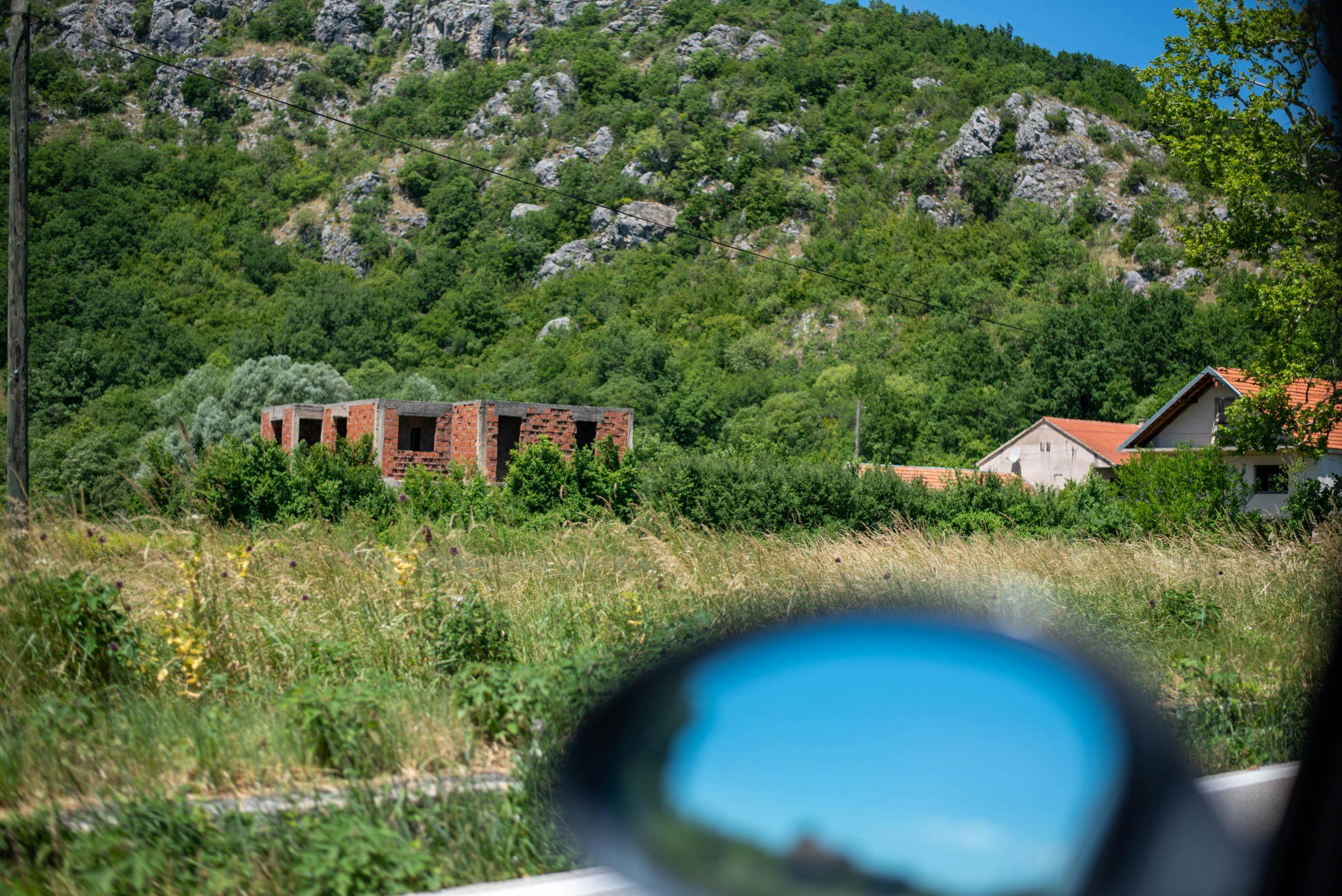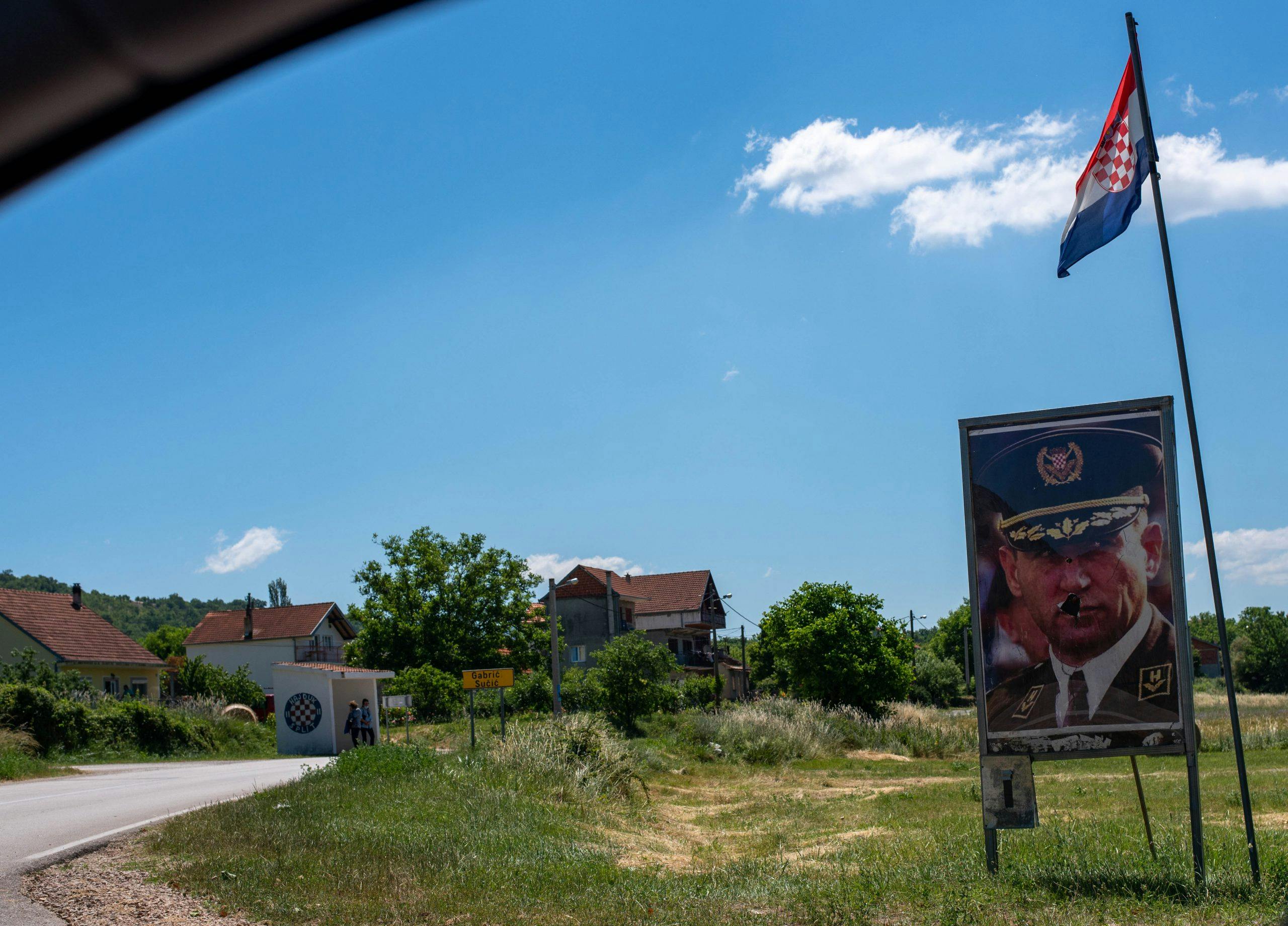A traveler’s guide to Yugo hunting in the Balkans
Travel guides—can you really trust them? Usually when we plan trips from the sofa, my wife has her laptop open with an ever-growing spreadsheet of all possible lodging and eating options. These are scoured from personal recommendations and online travel resources reflecting varying degrees of trustworthiness. Each destination gets its own tab for later evaluation. Meanwhile, my strategy is cruising outdated Google Streetview images looking for any interesting automotive garbage parked curbside.
Who’s to say what method is better? But with our powers combined, an ideal travel destination is often reached. In this case: a road trip through the Balkans.
It seemed appropriate to take the Lada, but I didn’t really trust it for a 2000+ mile journey into the unknown. (This was a rare splash of wisdom on my part, as a mere weeks later it tried to discus throw its clutch out of the bellhousing while on a drive in the Alps.) That left the Panda and our family tow pig, a slammed 2007 BMW 330d six-speed wagon.
Panda pros: zero radiated tourist vibes, generous ground clearance with unmatched maneuverability. But the AC was busted and with 54 hp, autobahn driving feels like a round of Frogger on the hardest difficulty level.
BMW pros: fast, big, comfortable but with practically negative ground clearance. German tourist aura: strong.
For reasons of speed, comfort, and size, the Panda keys were retired to the lockbox. I’ll spare you the beach photos in favor of why you’re really here. Let’s get to the car spotting!
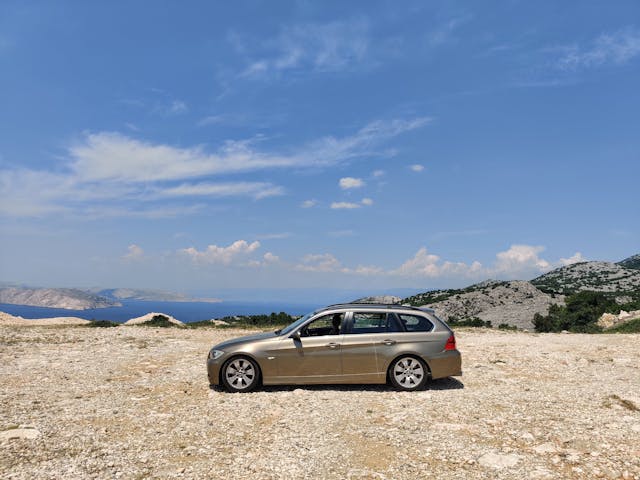
The focus of my automotive spotlighting was on Zastavas (or Yugos, as later models were also branded). Perhaps you remember the Yugo’s brief jaunt in the U.S. market with the GV, the subject of many eye-rolls and butt of cheap jokes. Zastava was a longstanding Serbian auto and weapons manufacturer which achieved phenomenal sales success throughout Eastern Europe, mostly due to limited choice in that market. Early models were Fiat 600-inspired while later releases like the Skala and Koral/45 were, respectively, Fiat 128- and 127-based. My eyes were on the hunt for any surviving relics out of former Yugoslavia, with a tally for each marked in my handy notebook. Travel notes, if you will.
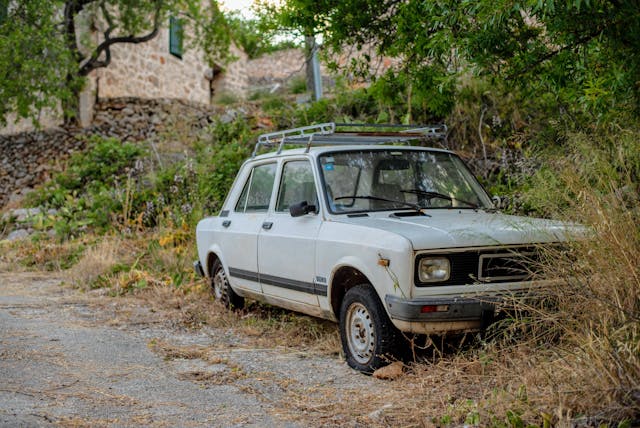
The first stop was the seaside town of Rovinj, which was our home base for driving from beach to beach. Even better than the beaches were the boatyards. In one repair yard, the smell of salt air mixed with epoxy and stale beer as the local trademen periodically lowered their dust masks to take a sip from hot cans. The vehicle of choice for this demographic? That would be the Yugo Tempo 1.1, my friend! What was sold as the Yugo GV-series in the U.S. was also sold under as many as 28 different model names globally. For those without a car, the Slovenian moped known as the Tomos is the hot-ticket item.
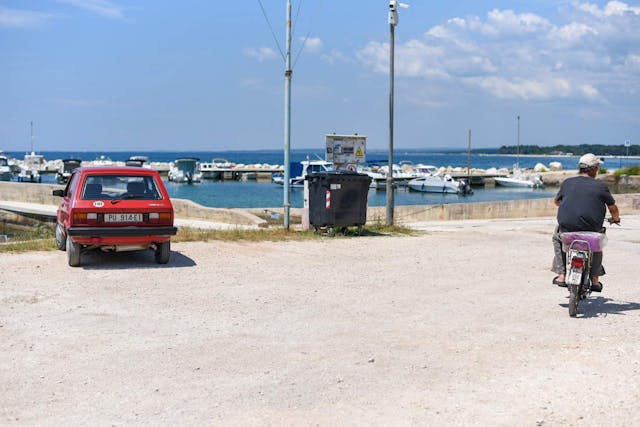
Getting from Rovinj to the Croatian city of Split, via backroads, involved a quick jaunt through a formerly Serbian controlled region that was heavily shelled when the Croatians overtook it in the early ’90s. Something the guide writers avoid entirely. Driving through the small towns still showing evidence of the war make a strong and lasting impression.
To take a break and lighten things up, we stopped at a roadside stand in the area to take a quick stretch and hopefully buy some olives to snack on. The owner noticed me browsing his wares and hurriedly motioned me down into his cellar, where I was heartily welcomed into a secret cigarette smoke-filled speakeasy. He broke off some bread and poured me a dish of olive oil and a highball of Croatian moonshine. As my prolonged absence seemed increasingly difficult to explain to my wife, I ran up to retrieve her from the car with a chocolate croissant in hand. Back in the cellar, in the presence of a couple locals and a Hungarian girl and her husband, who could also speak German due to a working arrangement in Austria, we enjoyed lively conversation and eventually left with a few plastic jugs of moonshine under our arms. Next came the ferry to Hvar … but not before turning around to honor the endurance of this Slovenian-assembled Renault R12!
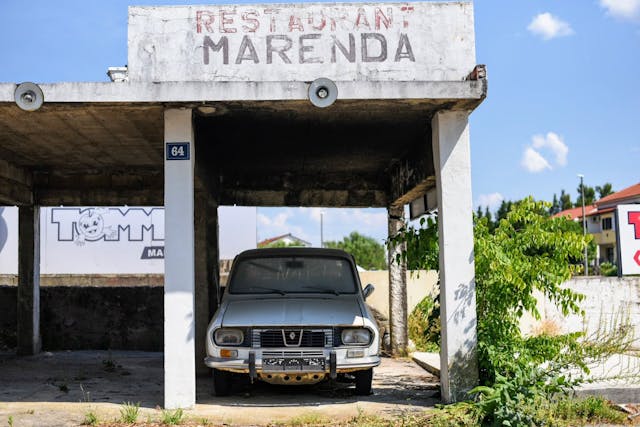
But wait, I found treasure! (Whilst scouting some rocks for a pre-ferry pee break, no less.) Clearly there was a time where one could just push their used Zastava off a cliff to dispose of it. Apparently, that wasn’t really that long ago. This seat would have been ejected from a Zastava 750 or “Fićo” as they’re called locally. I did attempt to take it along for the ride but it was full of water and mosquitos in assorted stages of the life cycle, so in the end I abandoned ship. Fićos in various states of decay—and their parts are a wonderful addition to the landscape across the Croatian coast. All noted in my running travel guide.

Hvar was noteworthy for its scary, narrow tunnel and steady supply of abandoned vehicles. Funny enough, only one of these two things was mentioned in the travel blogs we read. Something, something, something beaches, it said. To get to the more remote derelict vehicles near said beaches involves some tricky driving along impossibly narrow two-track dirt roads. With no guardrails. Taking the BMW’s nonexistent ground clearance into account, it was a pulse-raising choice between a) definitely leaving behind oil pan shavings on rocks and b) avoiding a plunge down a cliff face. The latter won the day. But no worries, here is a Magirus-Deutz Jupiter firetruck that cheered me up.
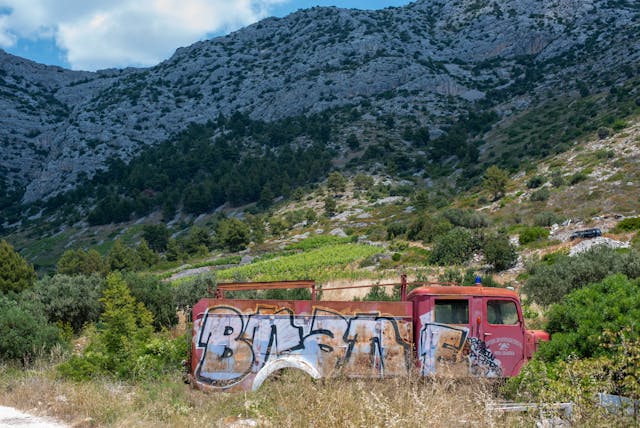
Checking into the hotel on the island of Hvar, I realized we could not have been luckier. Free breakfast and merely 100 yards from a junkyard! I’ll be sure to highlight that in my 5-star review. After filling myself with coffee, I headed in for a quick and hopefully undetected wander around. Three Zastava 750s! A derelict Porsche 928! A massive hole dug in the ground and filled with three Opel Astras! Does it get any better? Yes, it does. There were also three Slovenian Renault R4s and a Skoda Felicia. The junkyard held a fair amount more to explore, but I was starting to get funny glances from the local fishermen repairing their nets next door. I made tracks out of there.

While hiking through the olive groves on the Island of Hvar, we stumbled upon a most wonderful landscape: the county dump. And what more, a TAM 260 air-cooled Diesel V8! Not really seeing souvenir material in this Yugoslavian license-built Deutz lump and sensing that maybe my wife wanted to spend less time in a landfill, onward we went.

Yugo rental car graveyard … what a dreamy phrase to mutter. Even dreamier? A Yugo Cabrio—likely a home made creation—bears the Rental Car label proudly on the hood. If there’s a better way to get your valuables stolen than leaving them by the beach in a rental soft top, let me know. Also sharing the field were three or four Zastava Skalas wrecked by tourists (think Fiat 128 with a Simca 1204-style liftback) and a handful of TAM commercial vehicles.
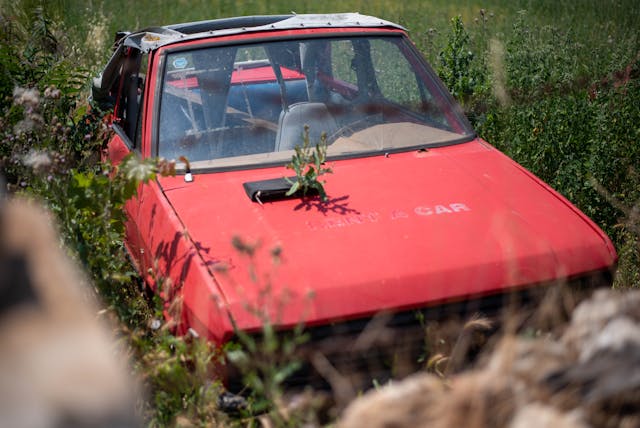
We left the island and made our way to backroads through the region, which offered an endless reel of exciting and often sobering sights, given the local history. As we traversed the landscape about 5 miles from Bosnia, we crossed through several militarized zones where photography was strictly prohibited. In the ancient city of Knin, twice previously declared the Croatian capital (most recently unofficially in 1996), large military vehicles and armed soldiers walked the streets next to gunfire-riddled cafes with hipster patrons drinking espresso outside. I wanted to take pictures, but out of respect for the consequences and the sensitive history, I’m glad I didn’t. Further outside of Knin where the feel was less tense, this TAM 5000 peaked its blind fascia out from behind a barn.
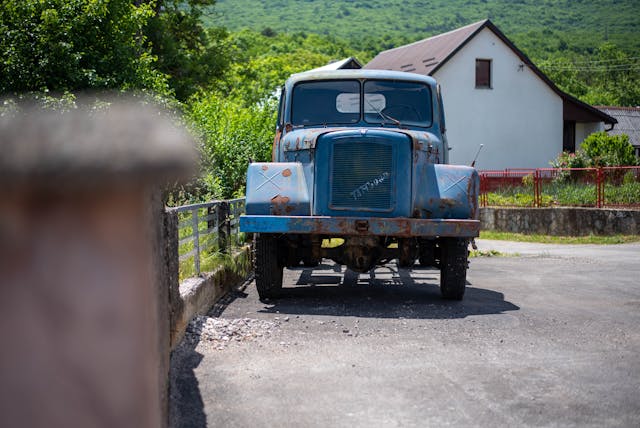
In summary, for all who ask “so, Matt, what was your travel experience of Croatia? As in, what’s the Zastava situation over there, and what’s the distribution in comparison to other Iron Curtain cars and license builds?”, I present the following scoresheet:
Zastava 101/128/Skala: 15
Zastava 750: 10
Yugo 45/55: 14
Yugo Cabrio: 1
Zastava 1500: 1
Zastava 615: 2
Zastava 850AK: 1
Yugo Florida/Sana: 0
TAM 75/80: 22
TAM 110/125/5000: 4
Lada Niva: 29
Slovenian-production Renault 4: 27
Skoda Favorit: 4
In terms of a qualitative review, I can’t recommend enough visiting the former Yugoslavia. The people, food, scenery, history, and the street traffic are alone good reasons to go. But don’t just read the guides. Pick up a history book, brush up on your Google Streetview, and gird yourself for surprise moonshine.
***
Matthew Anderson is an American engineer who relocated to Germany a few years ago for work. In his spare time, with reckless abandon, he pursues a baffling obsession with unexceptional Eastern Bloc cars. We don’t ask him too many follow-up questions.

